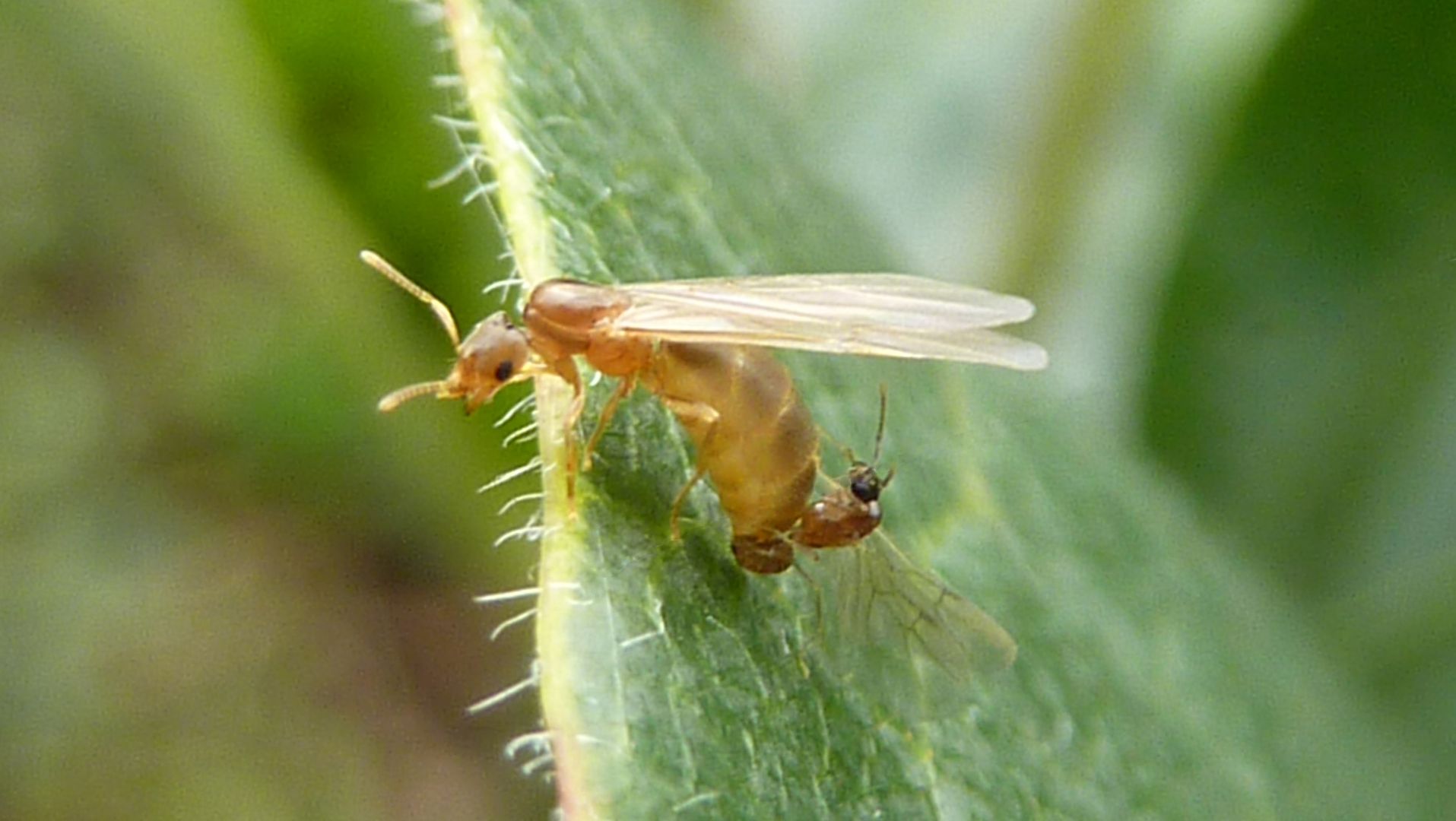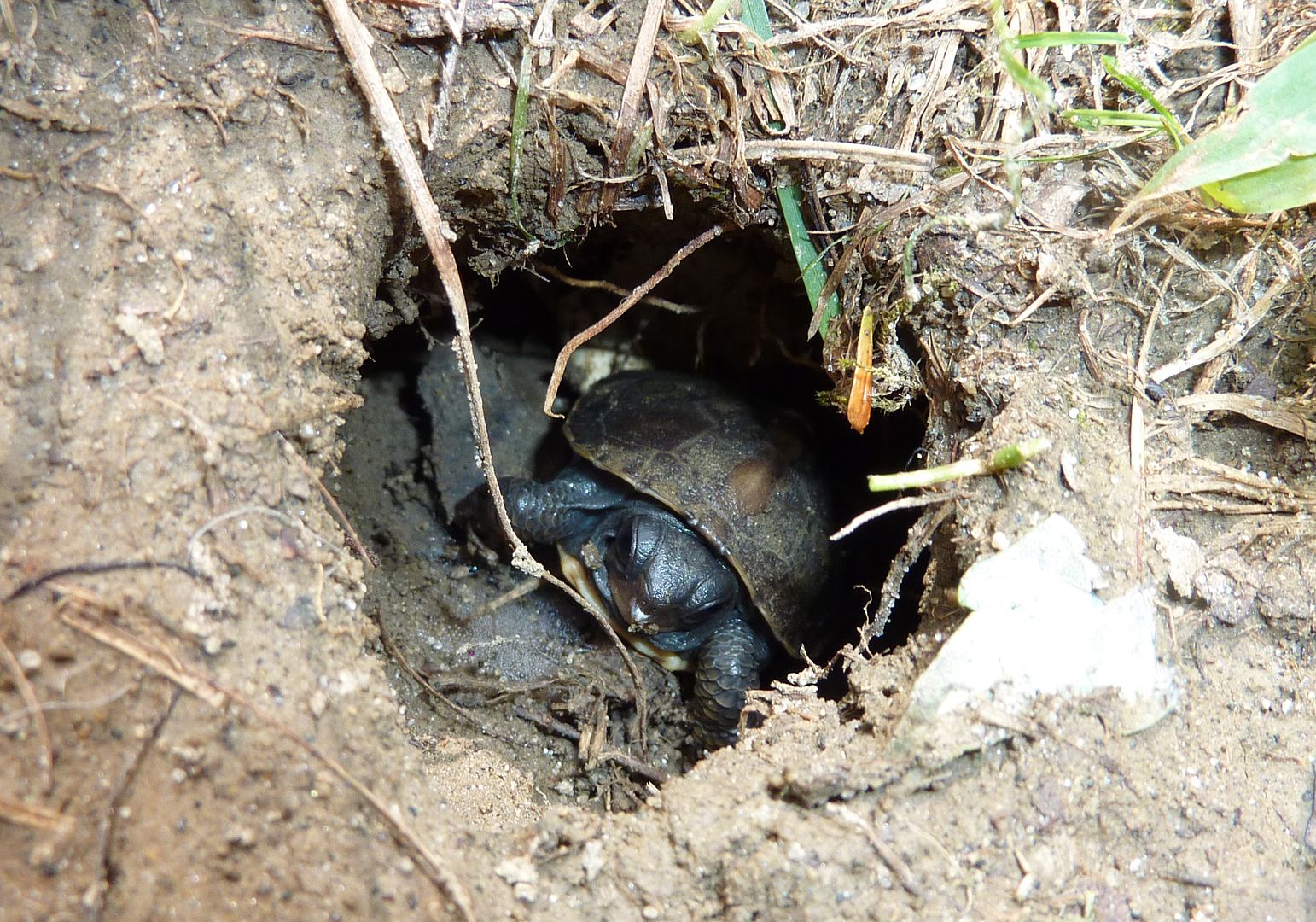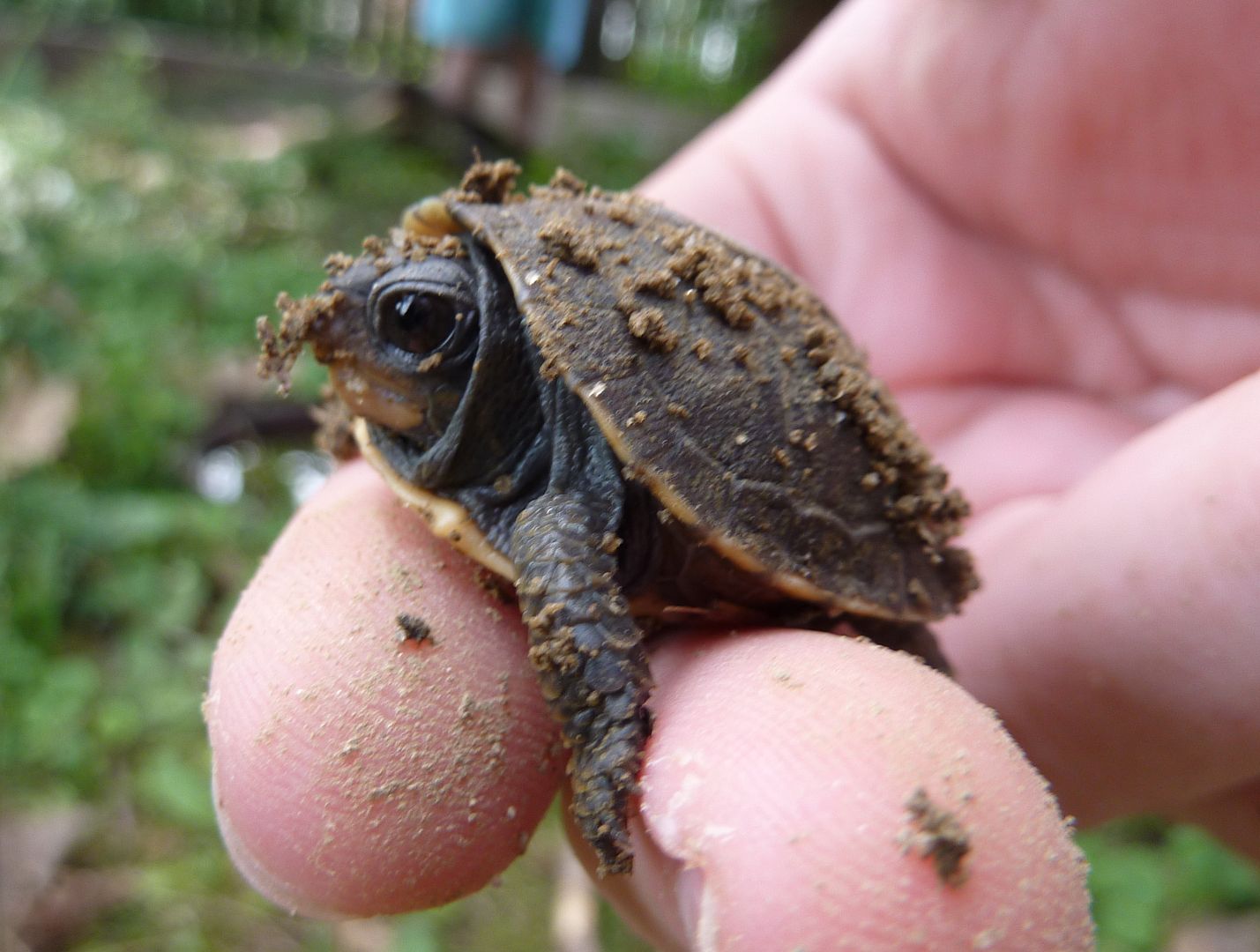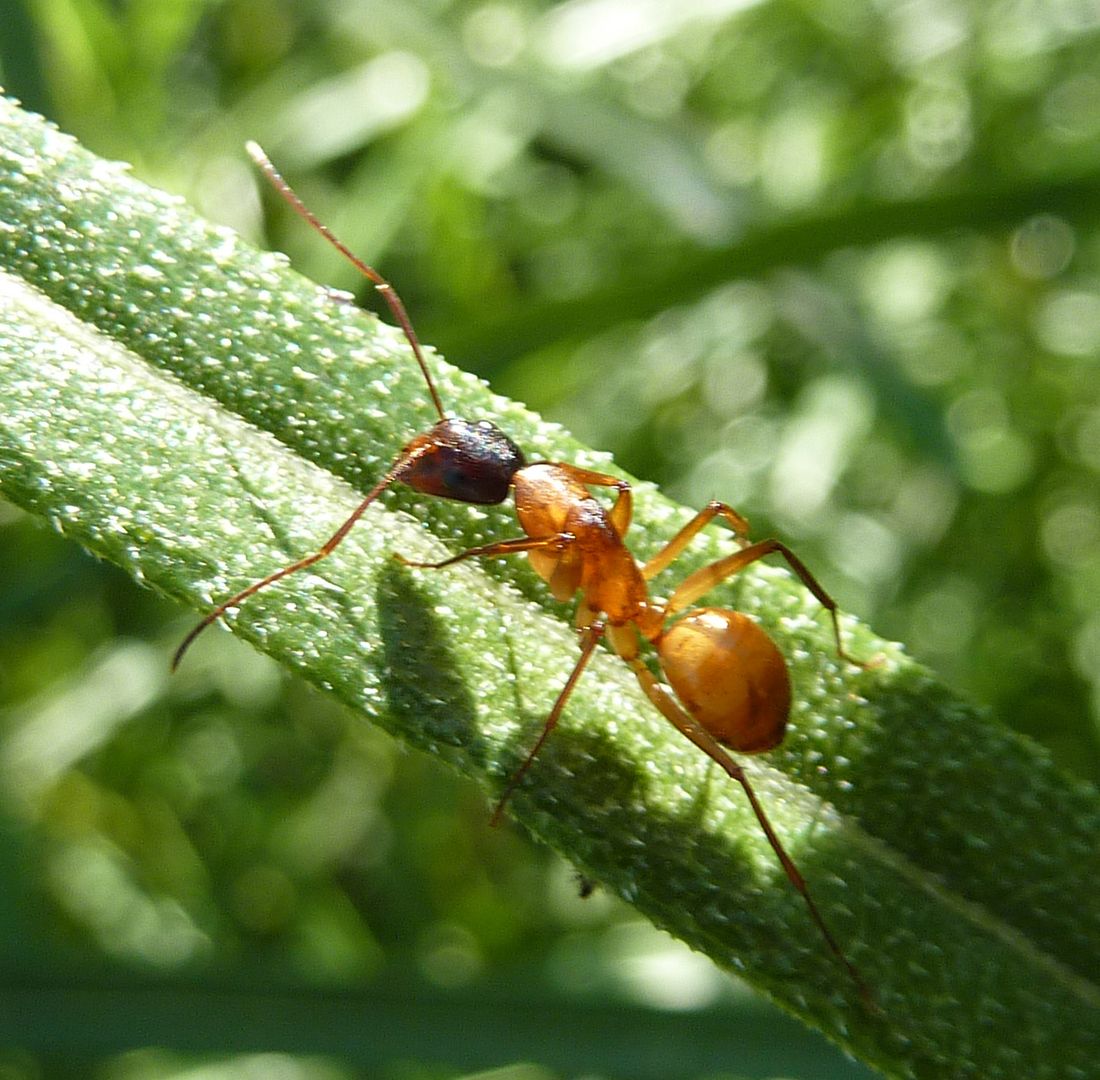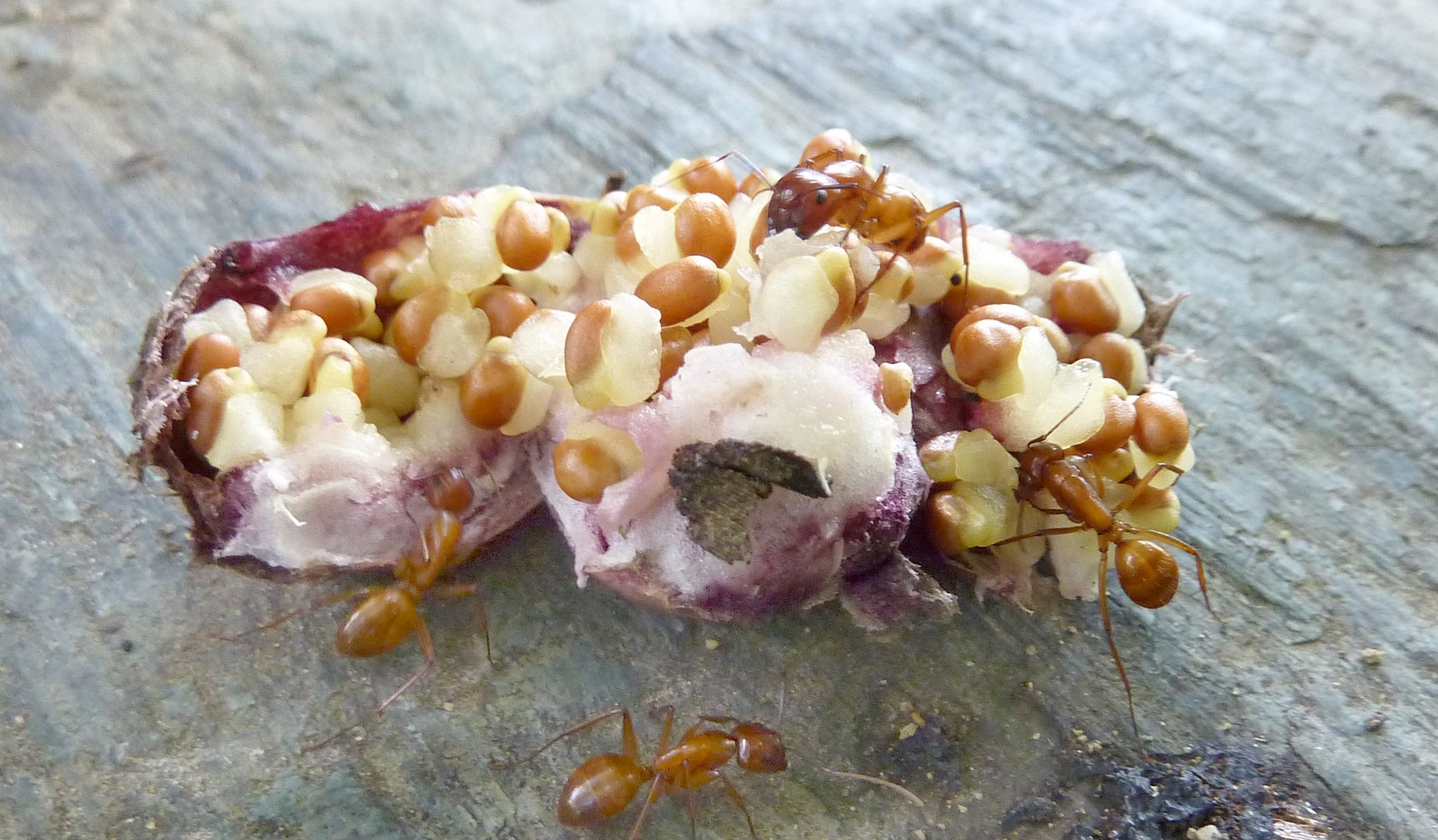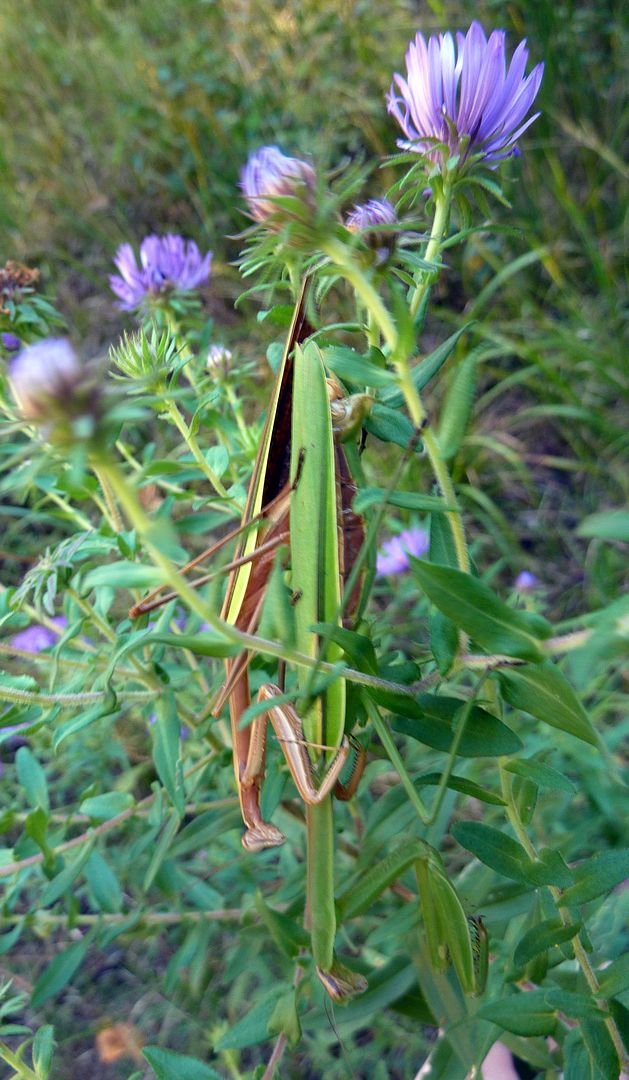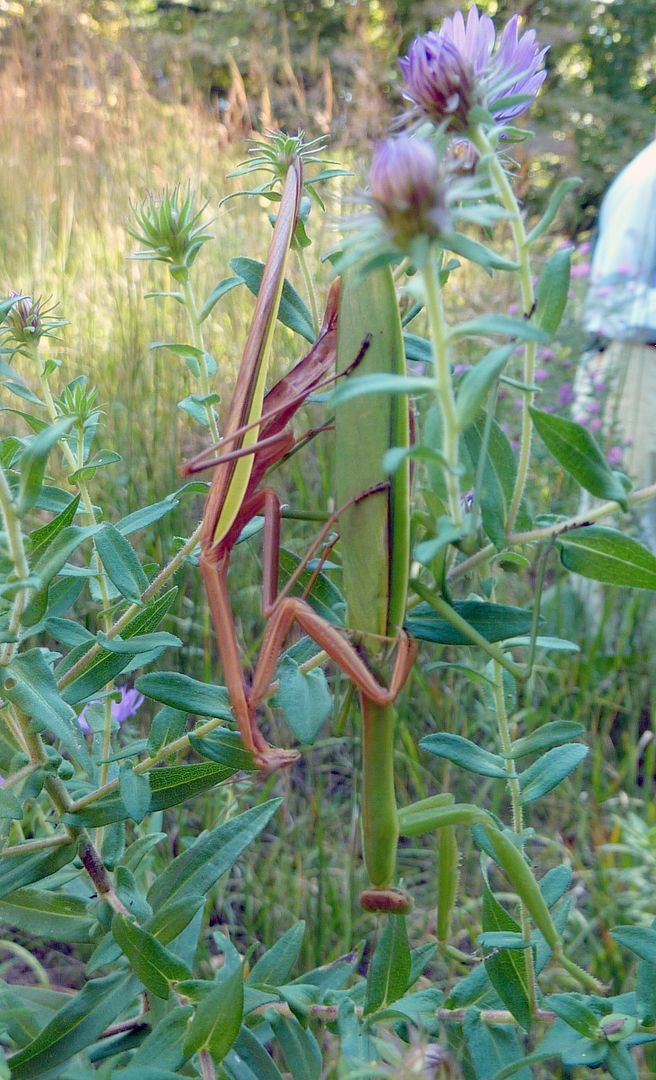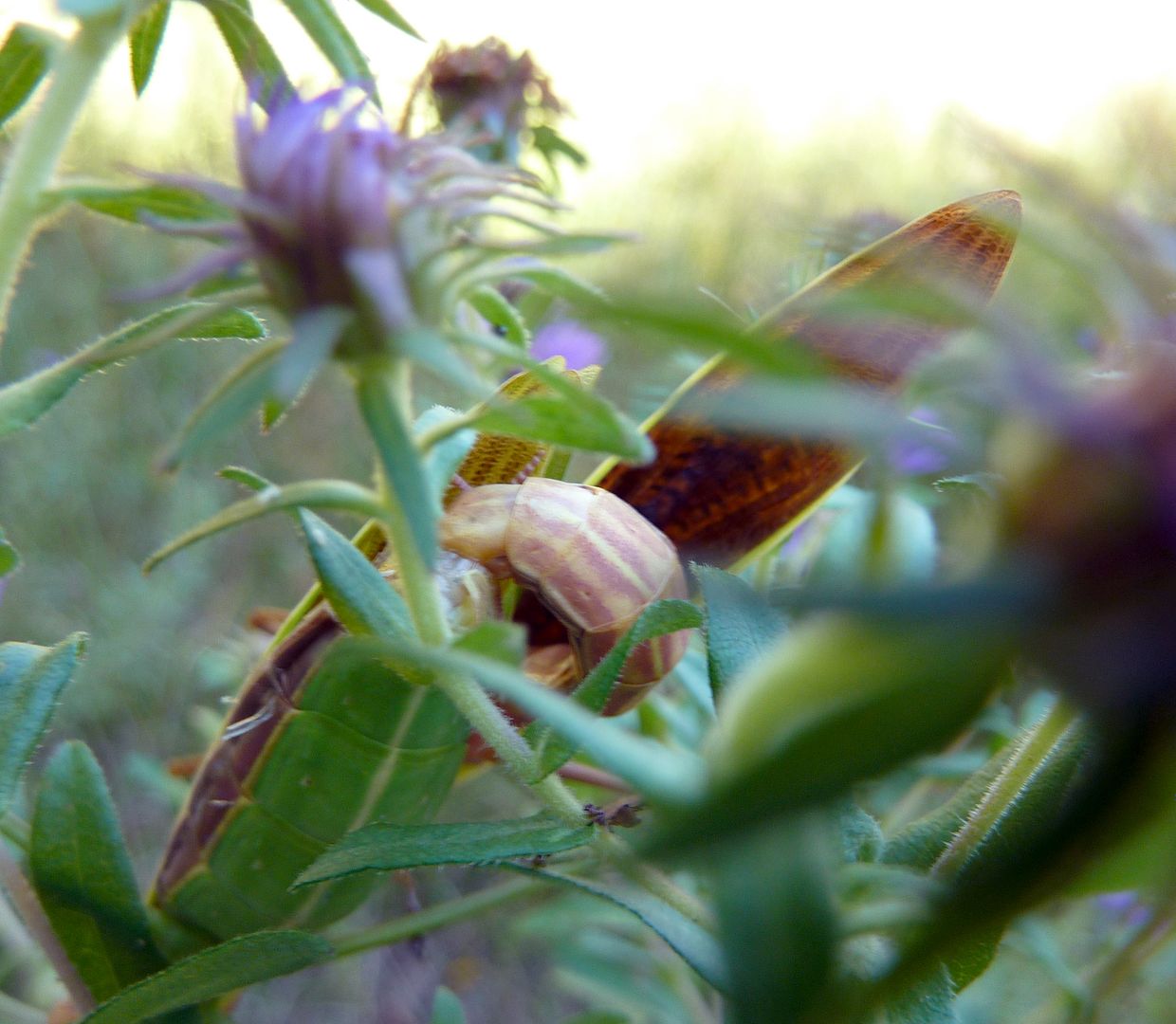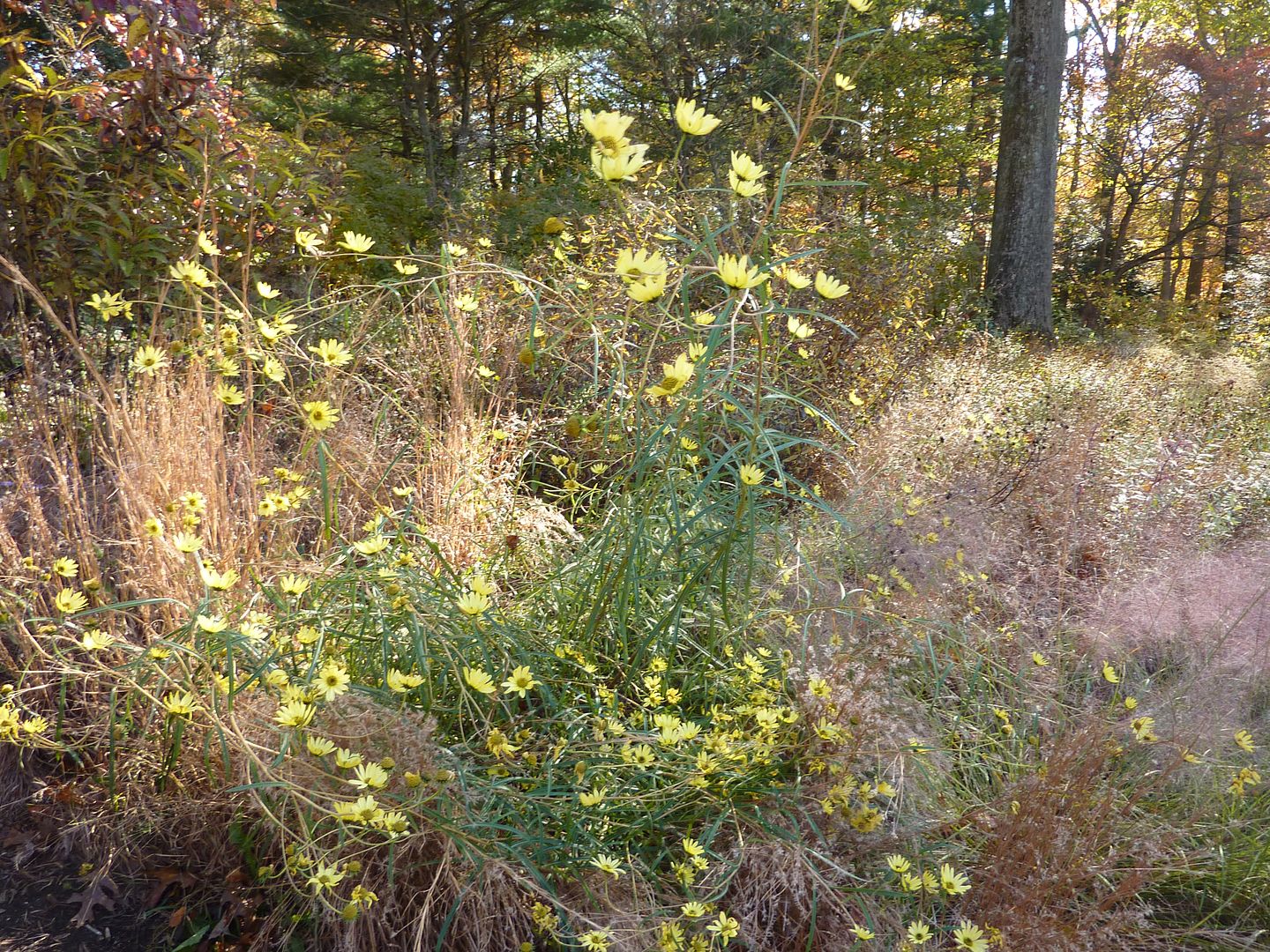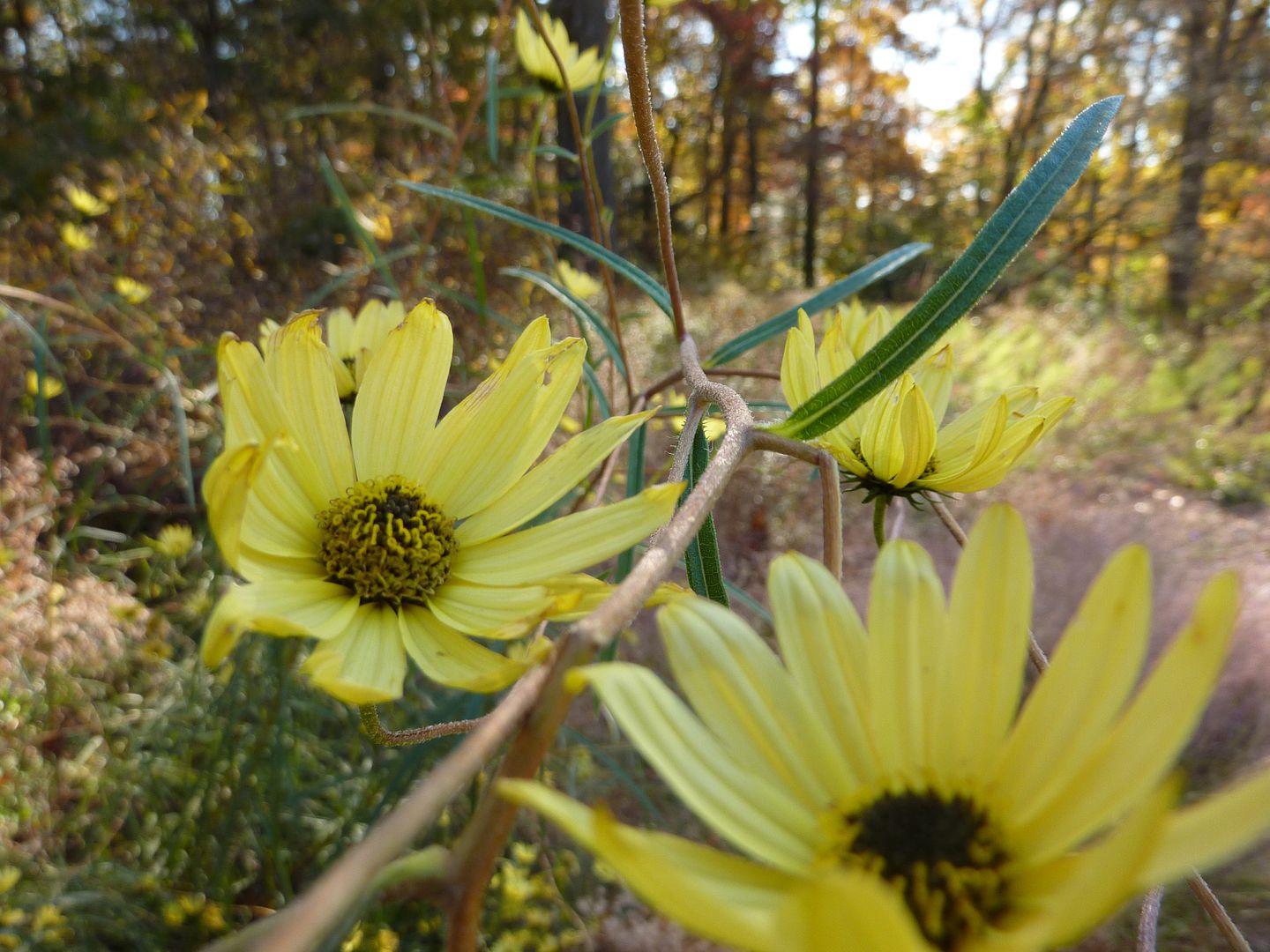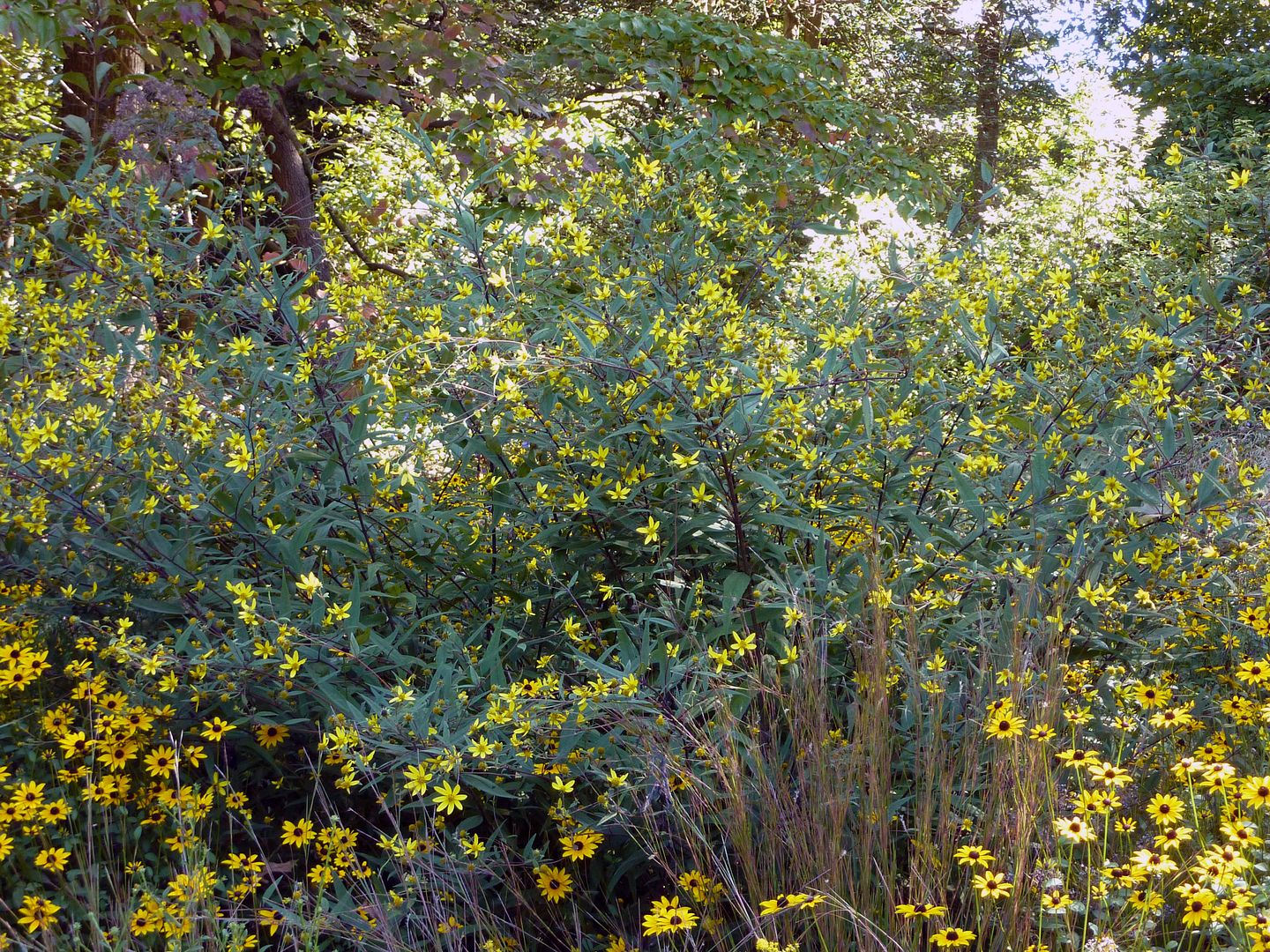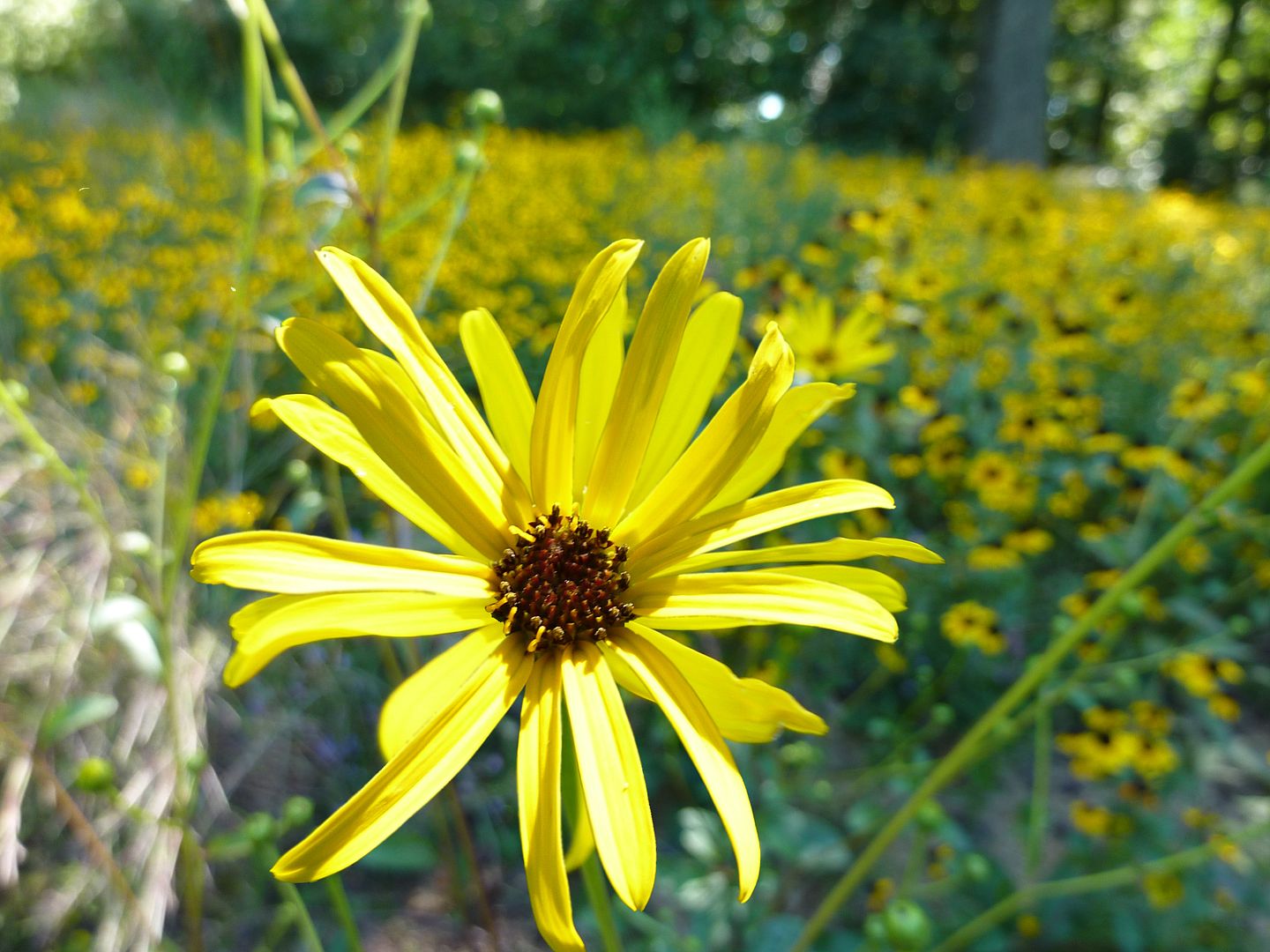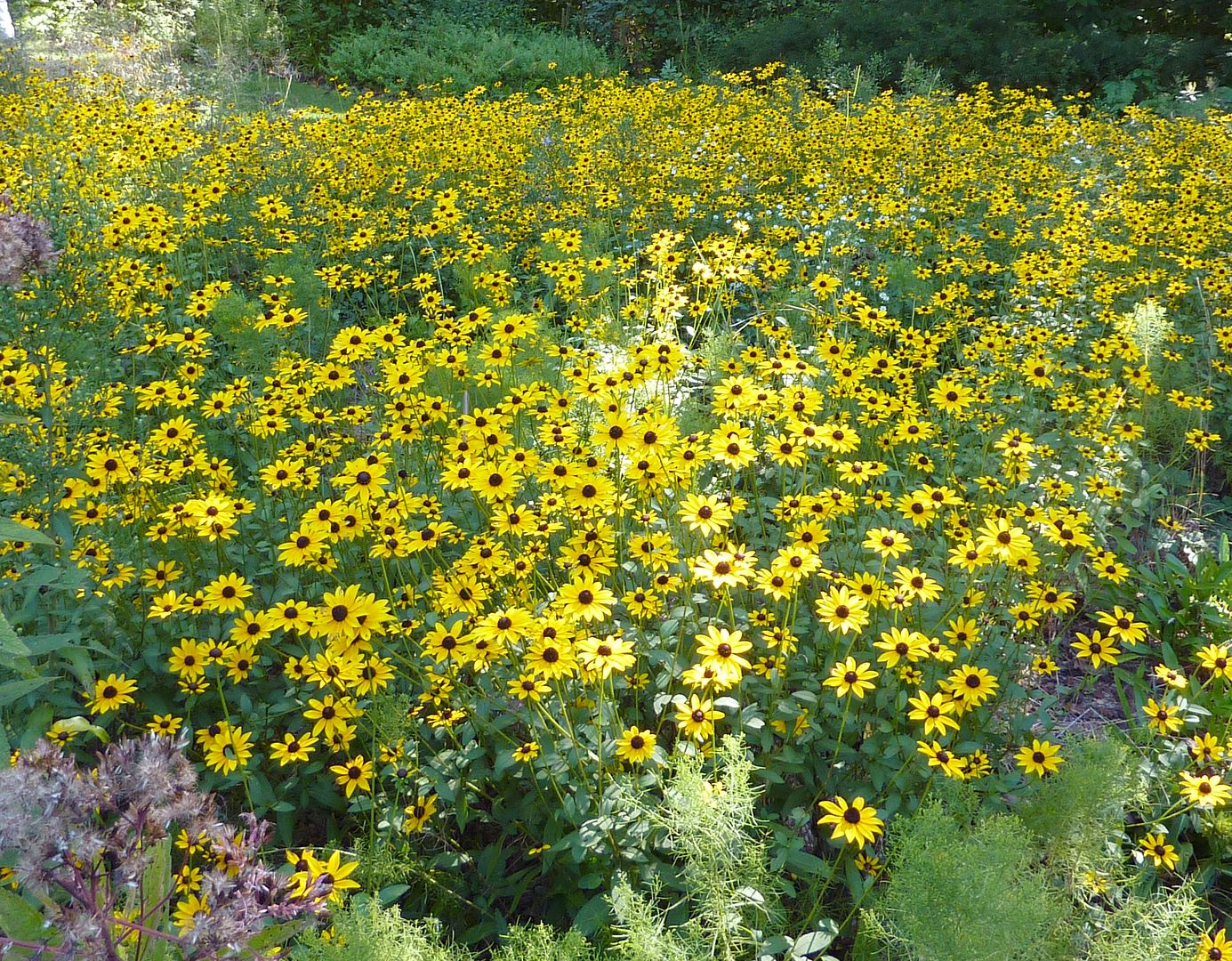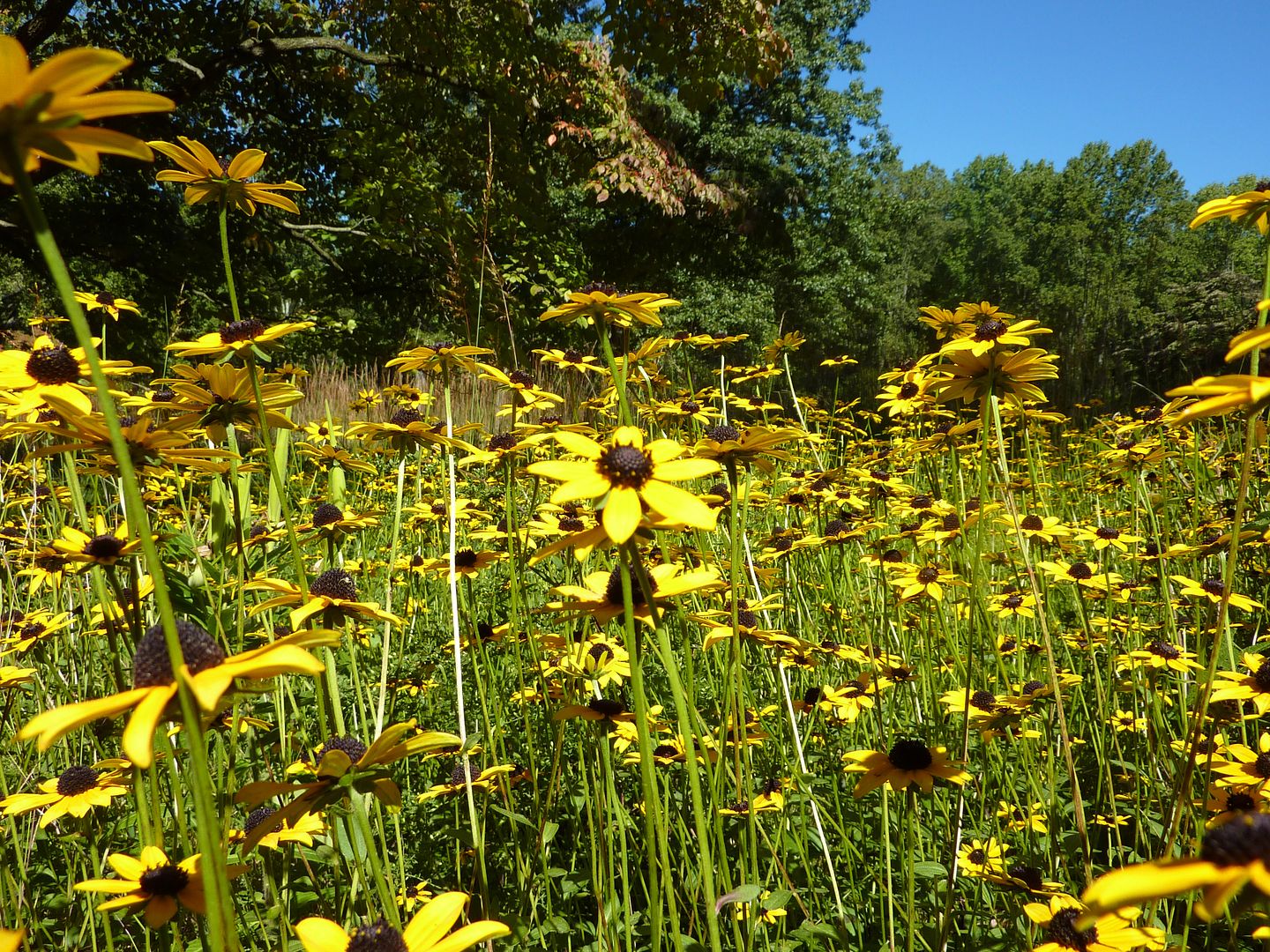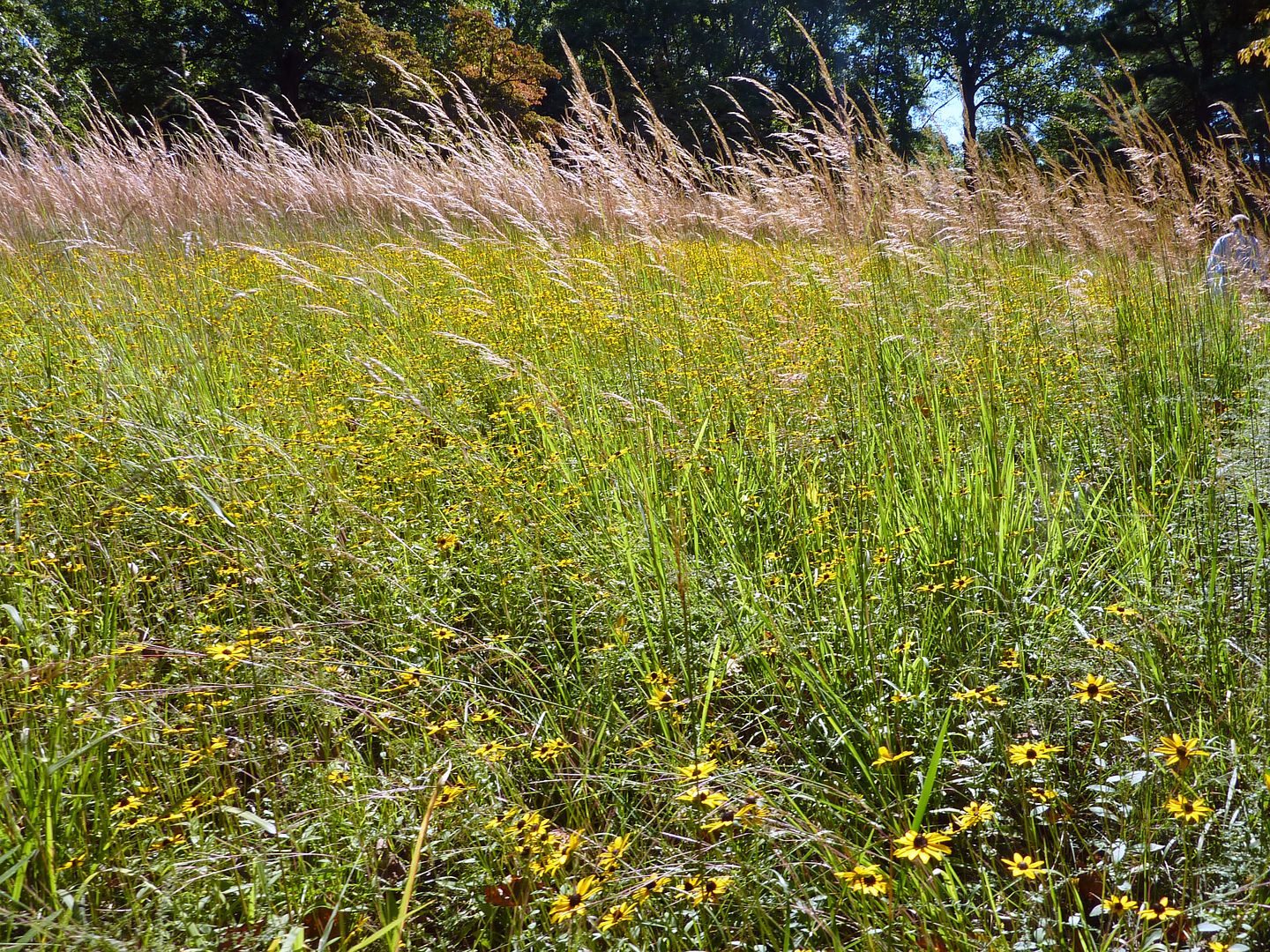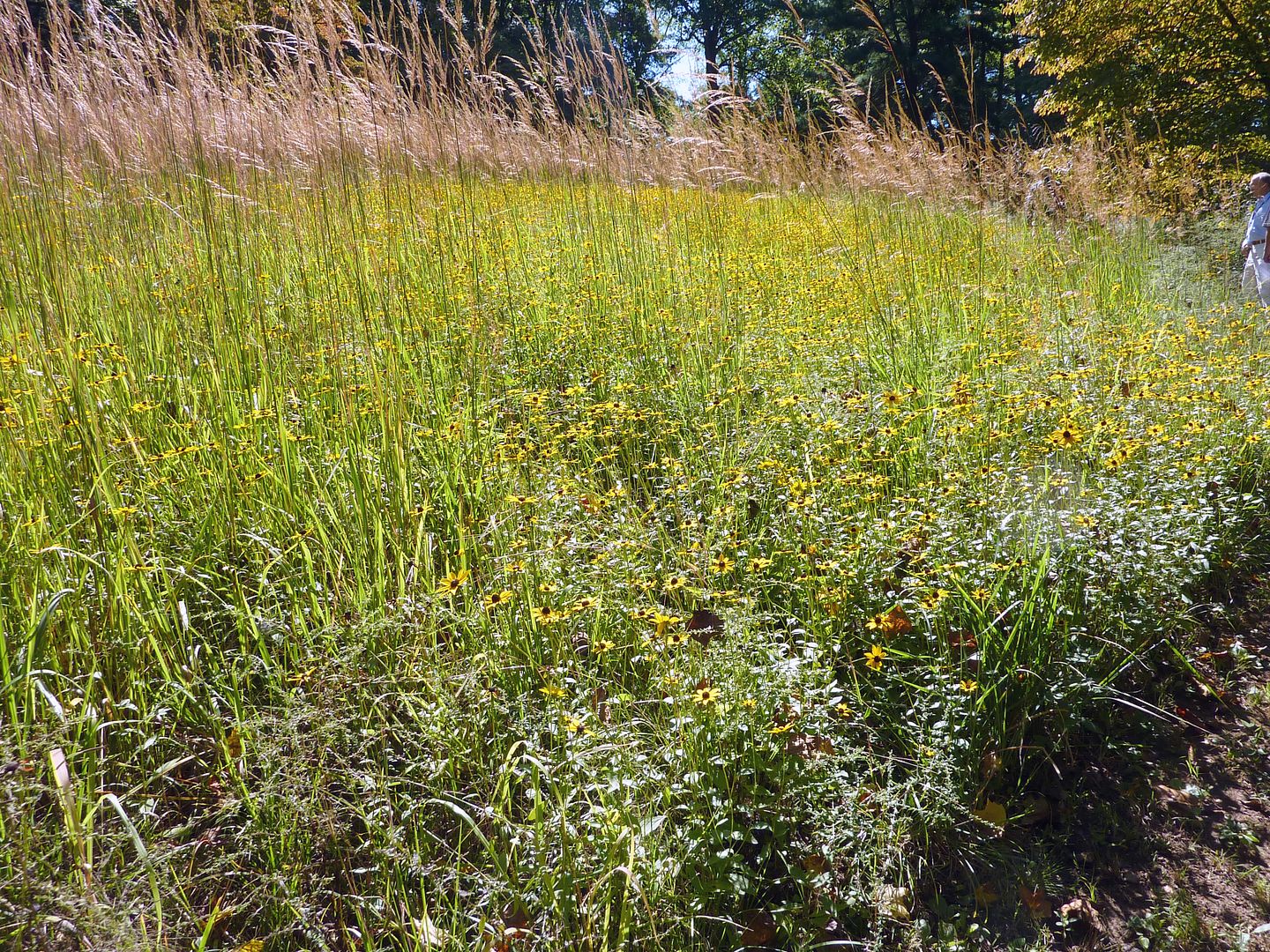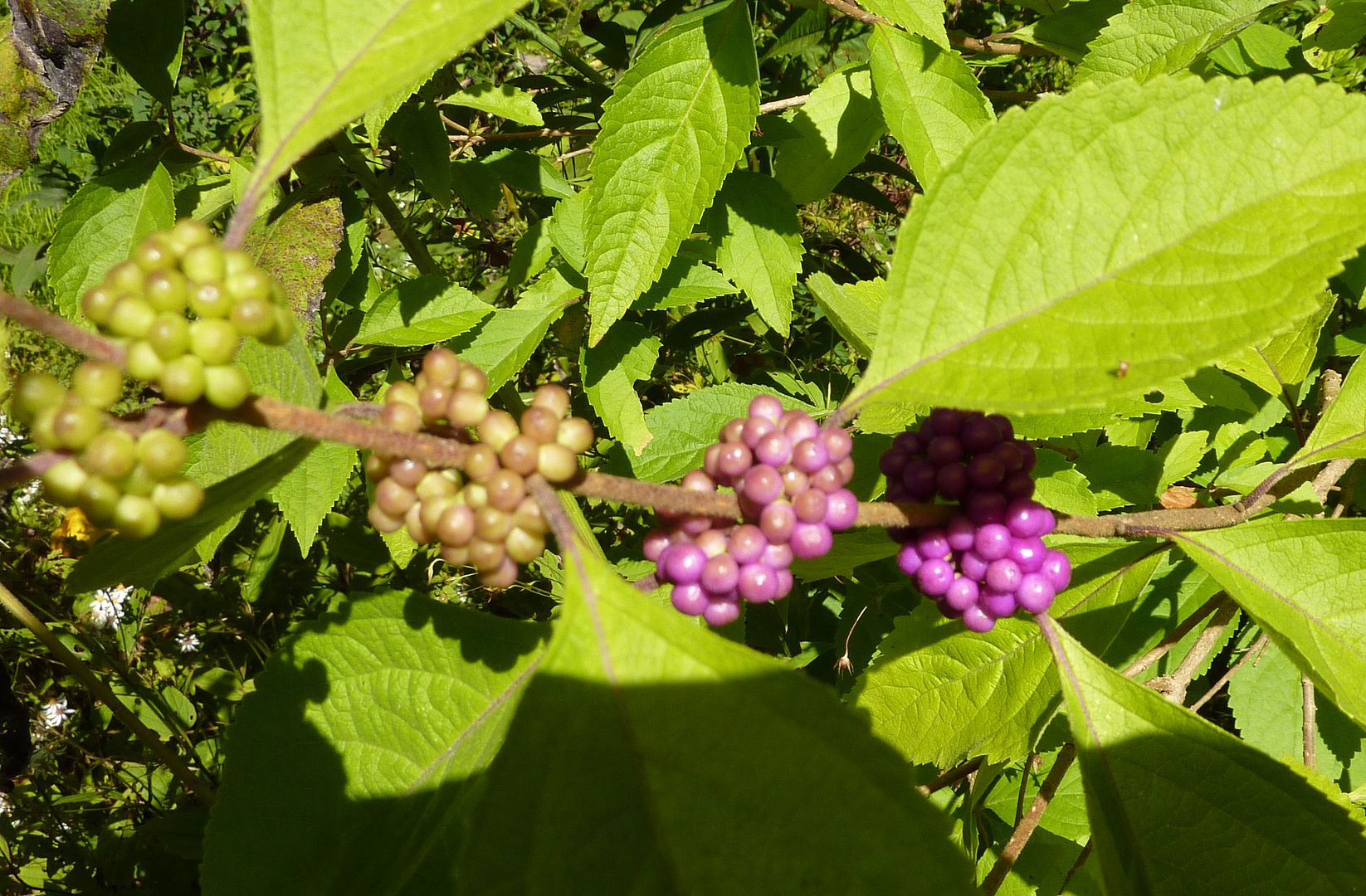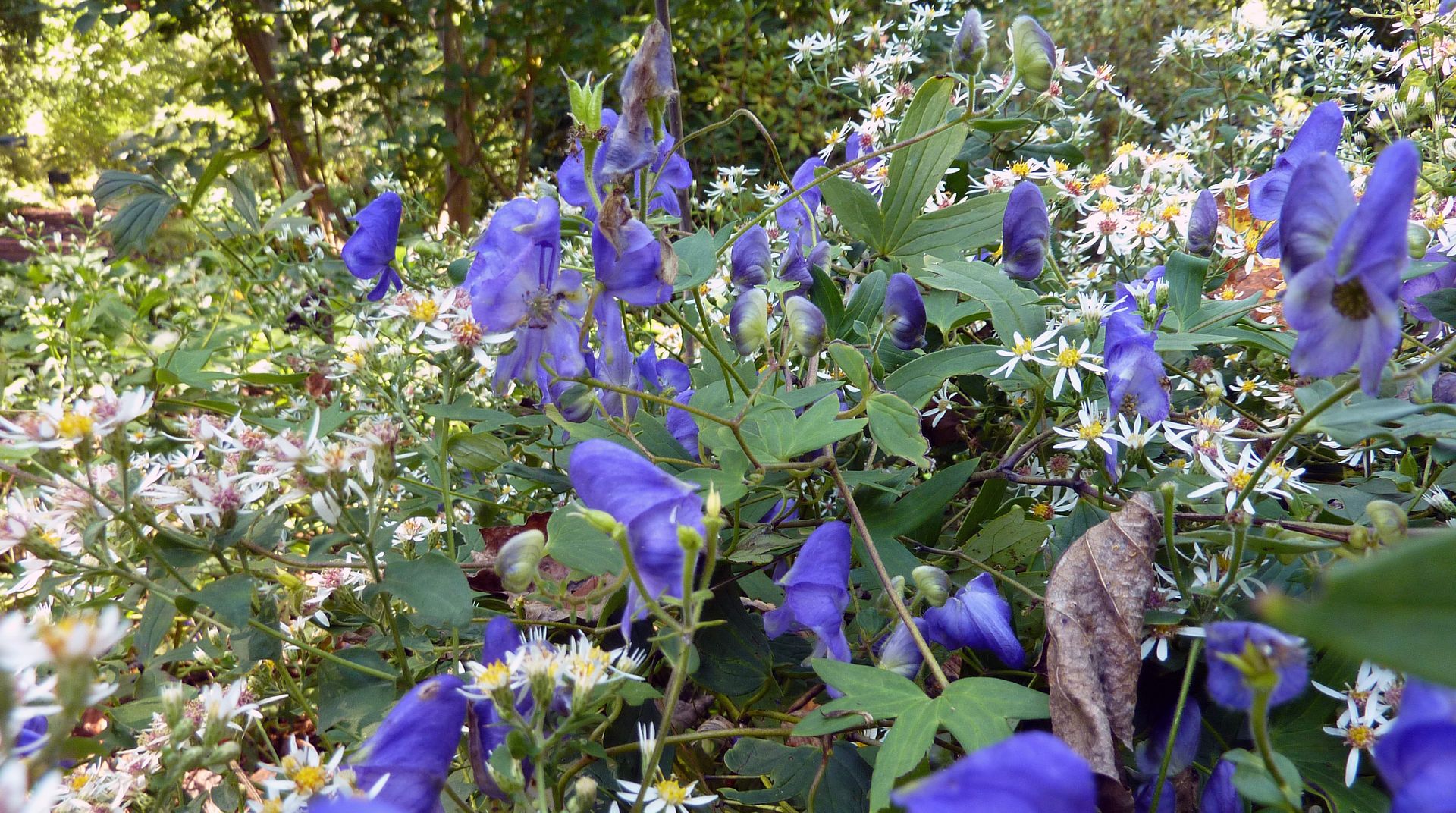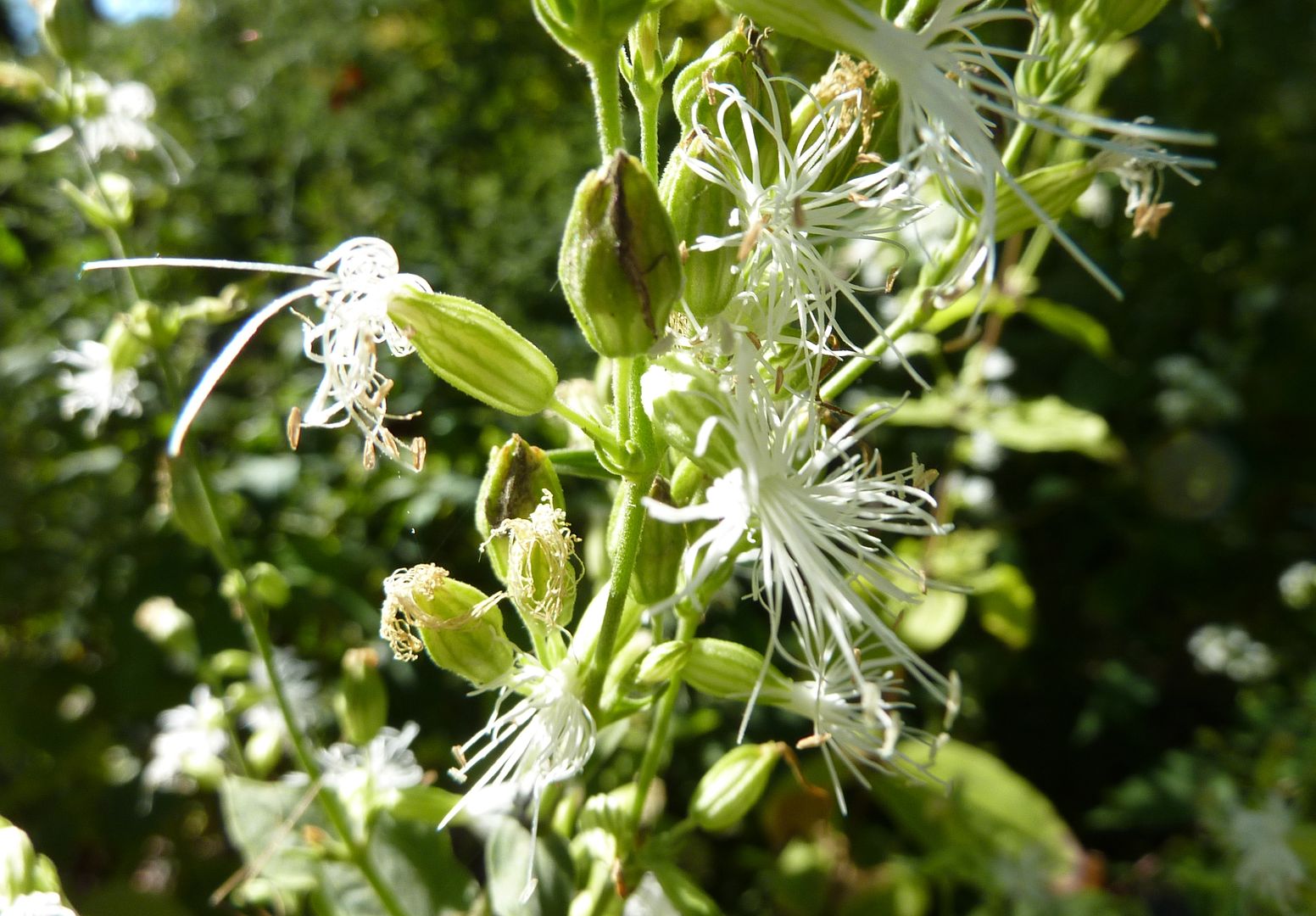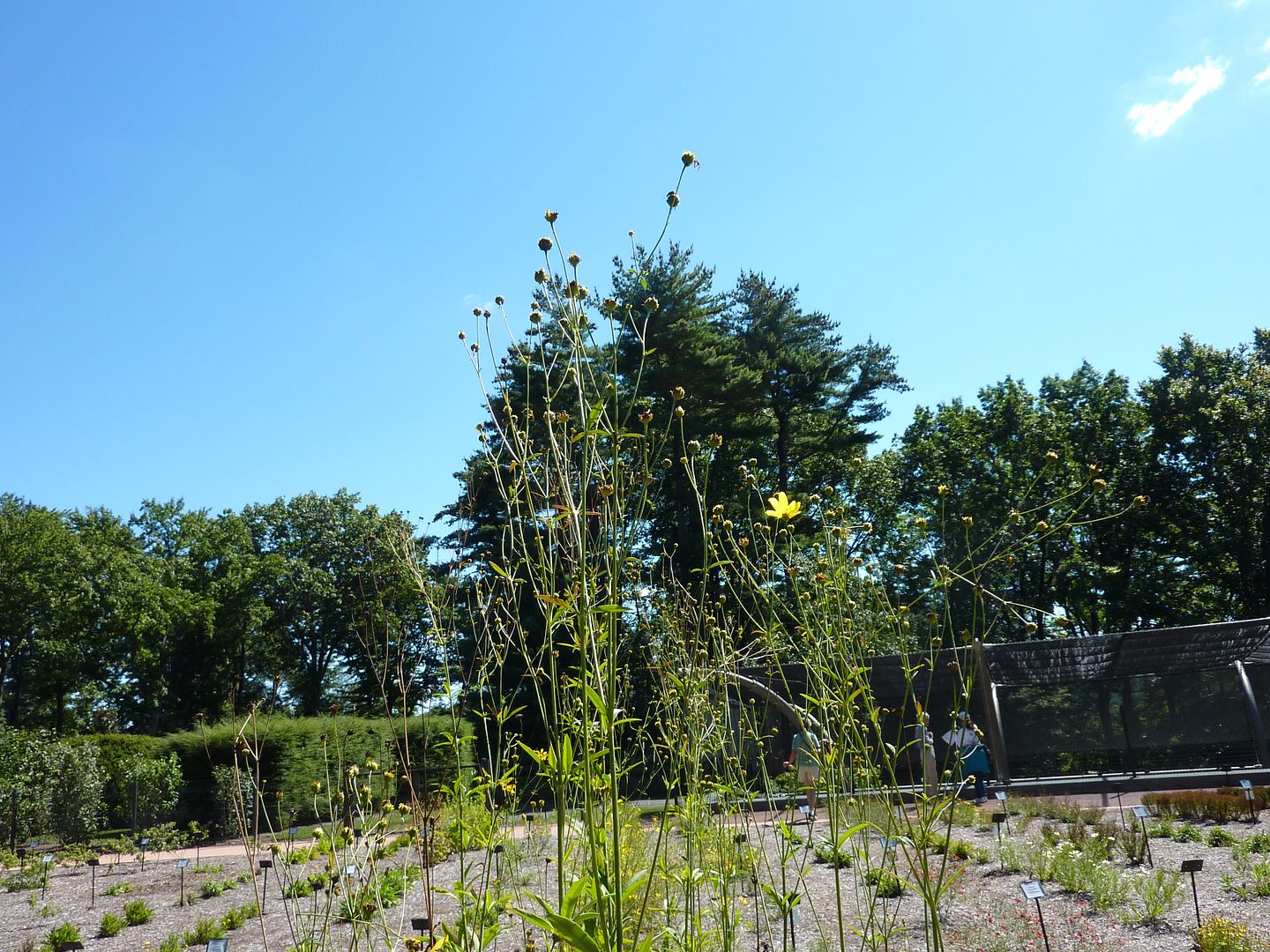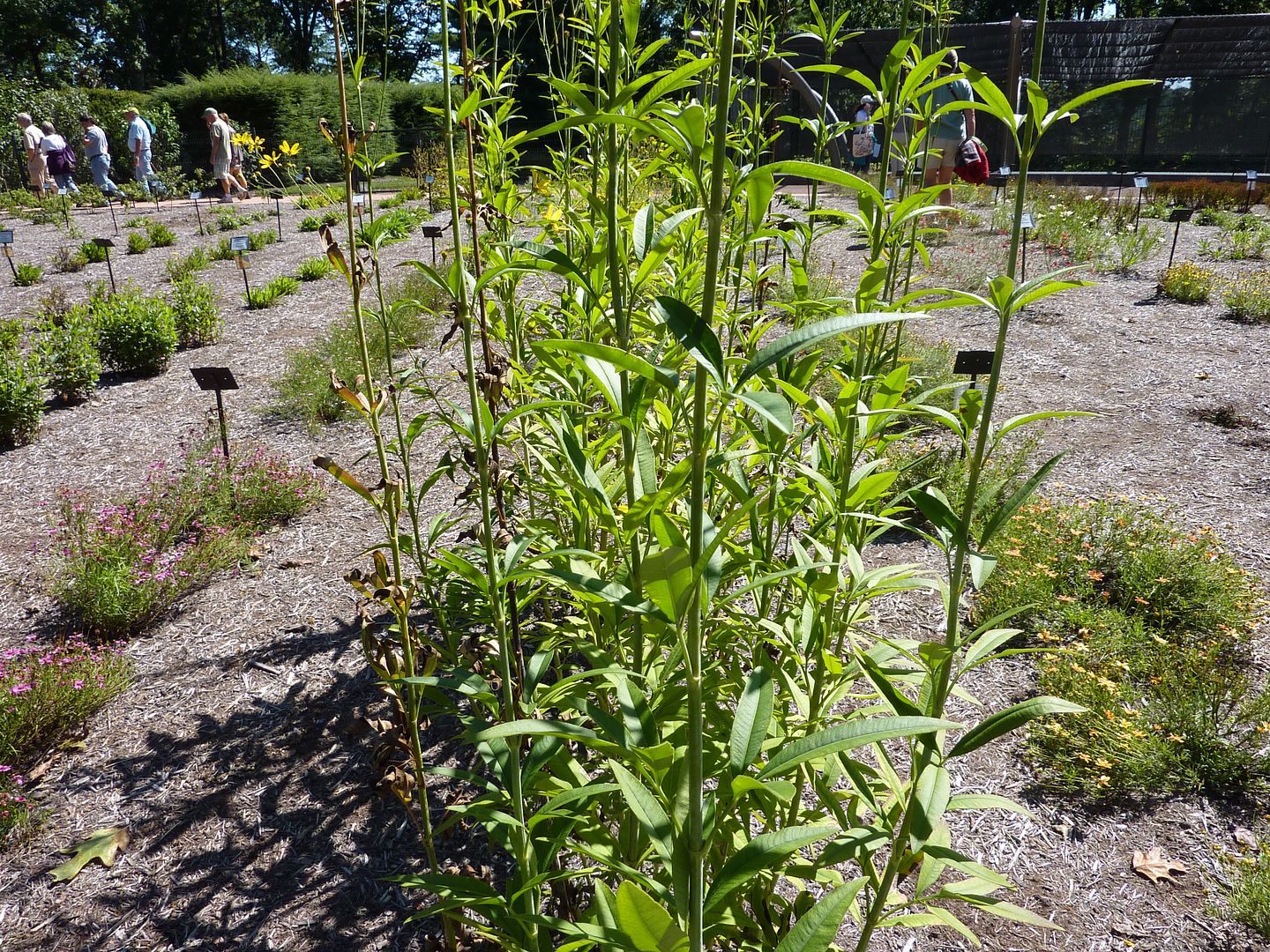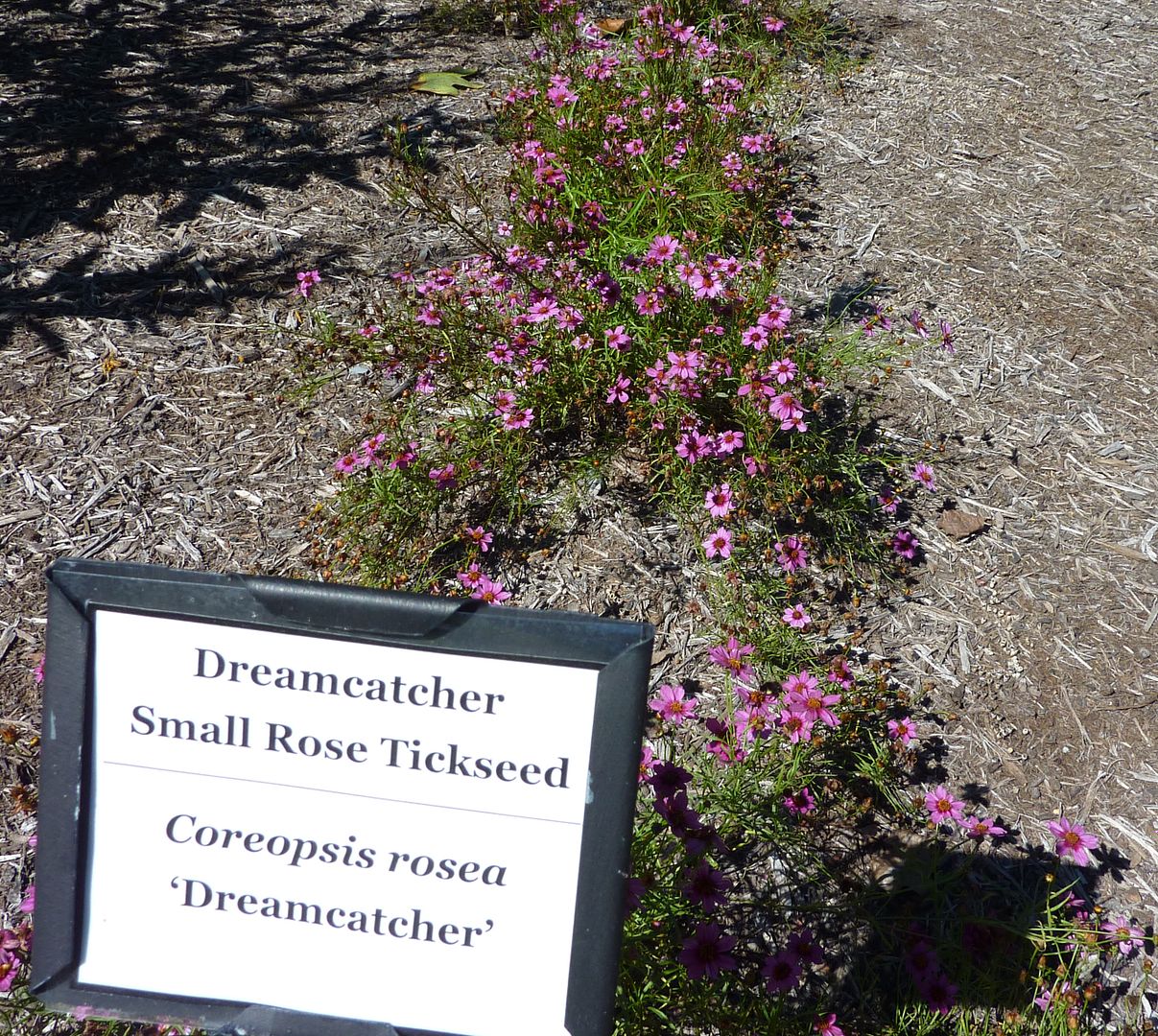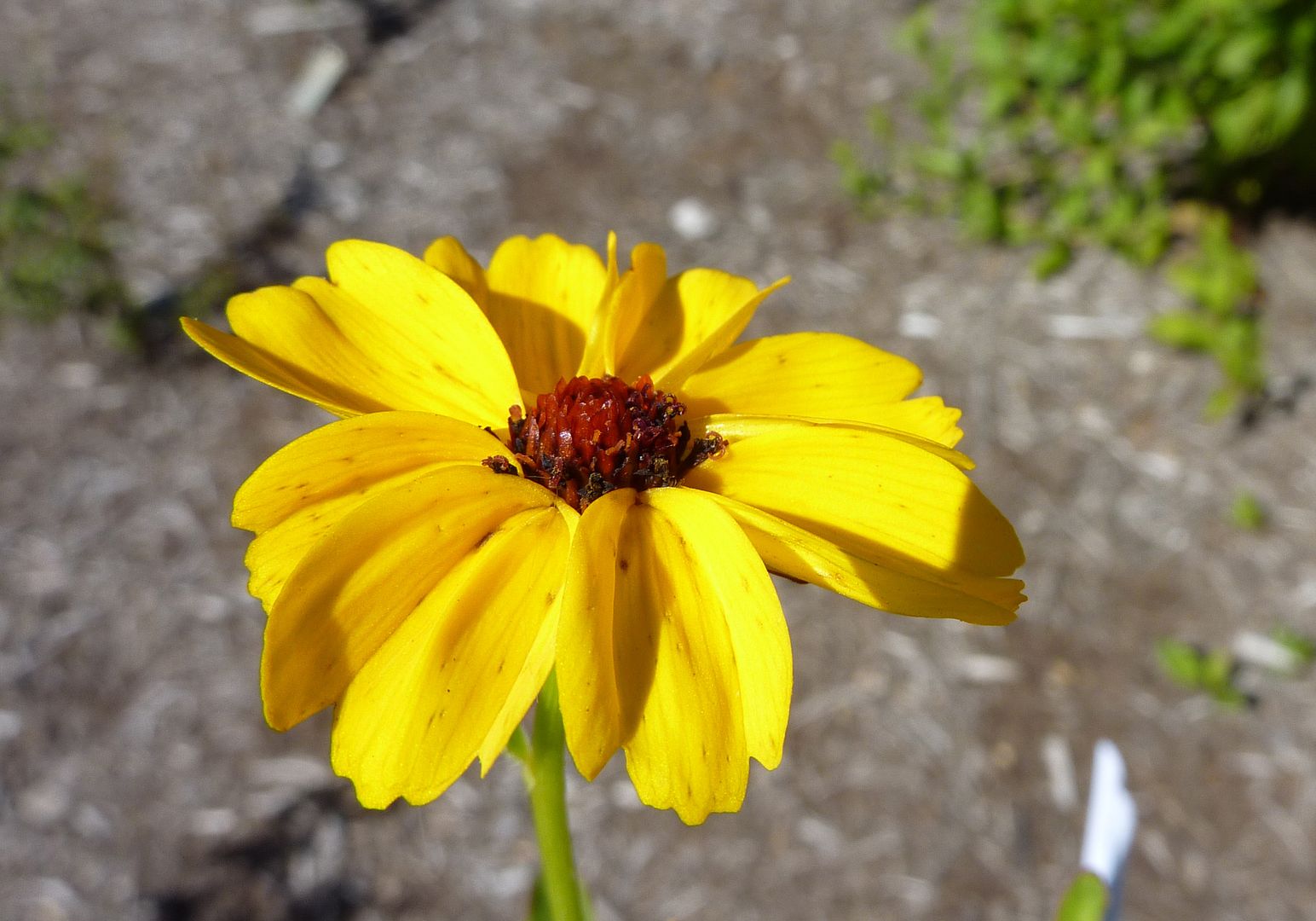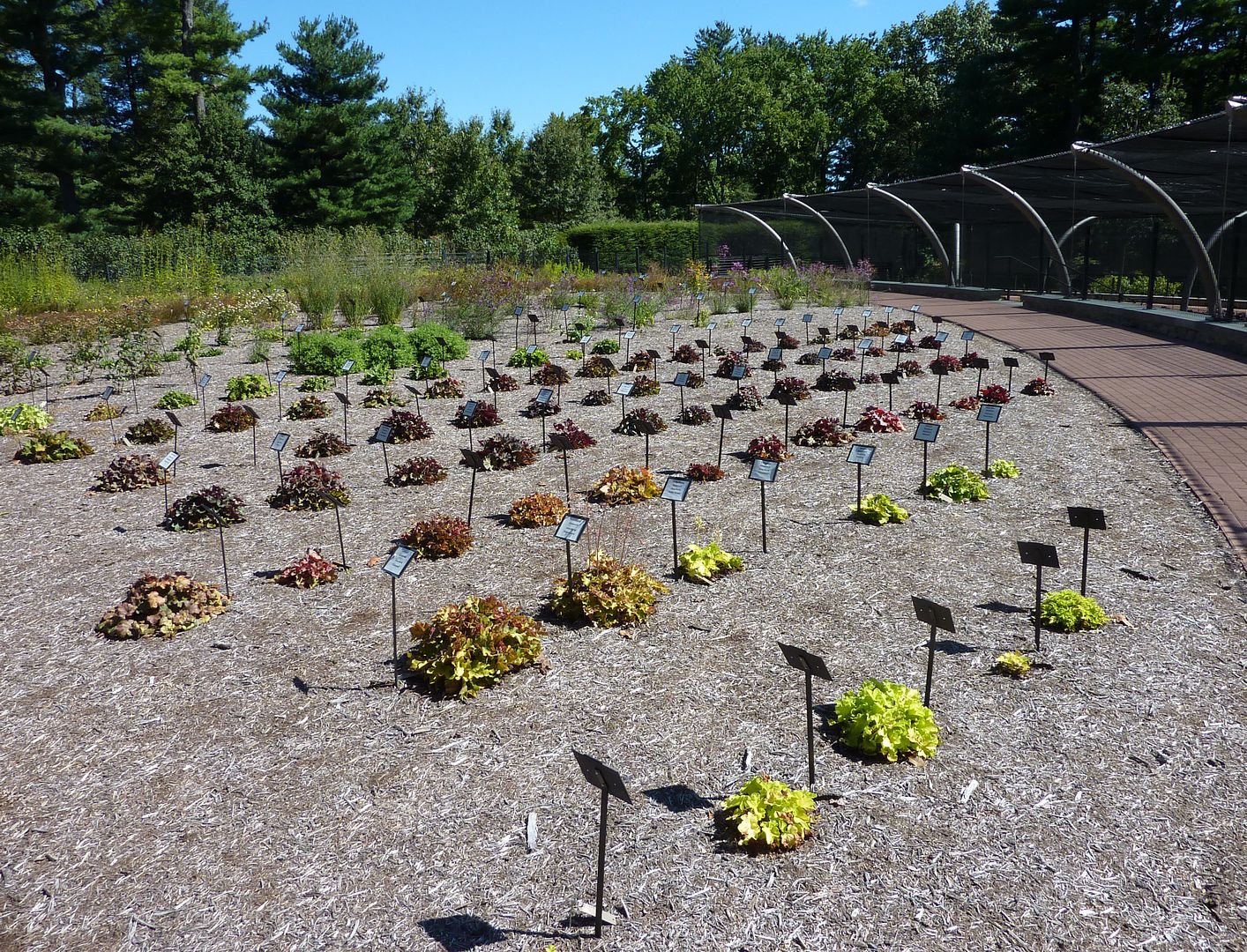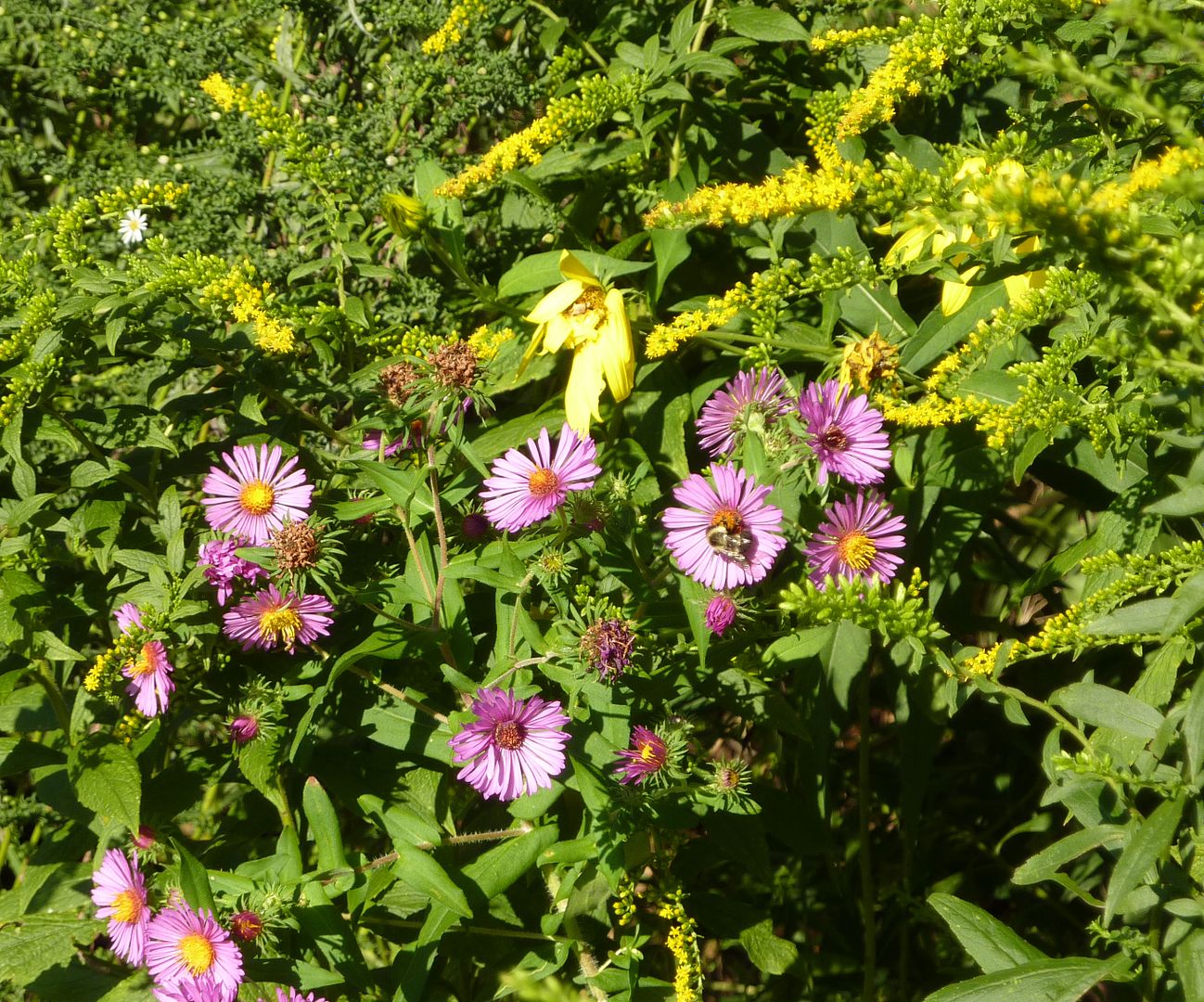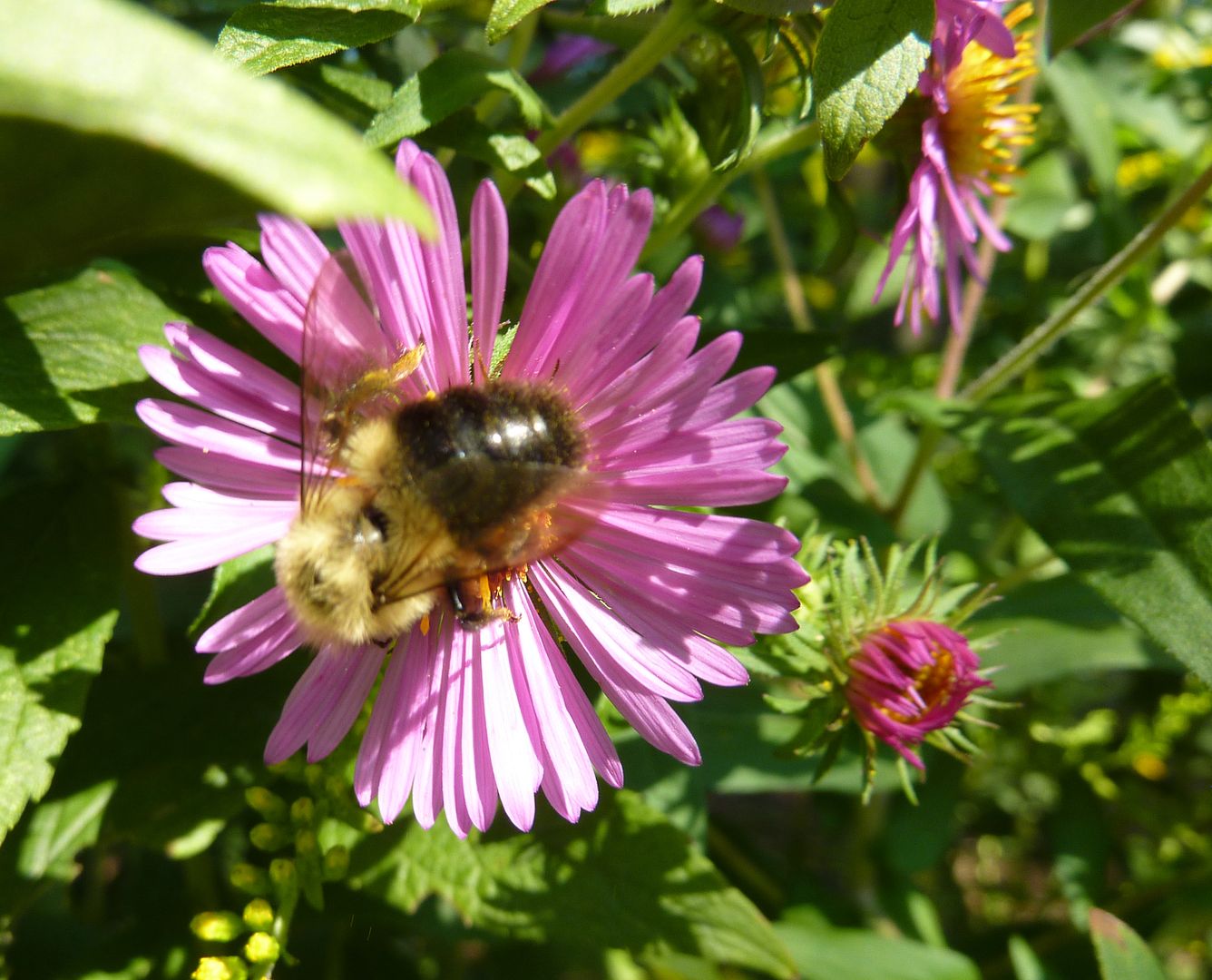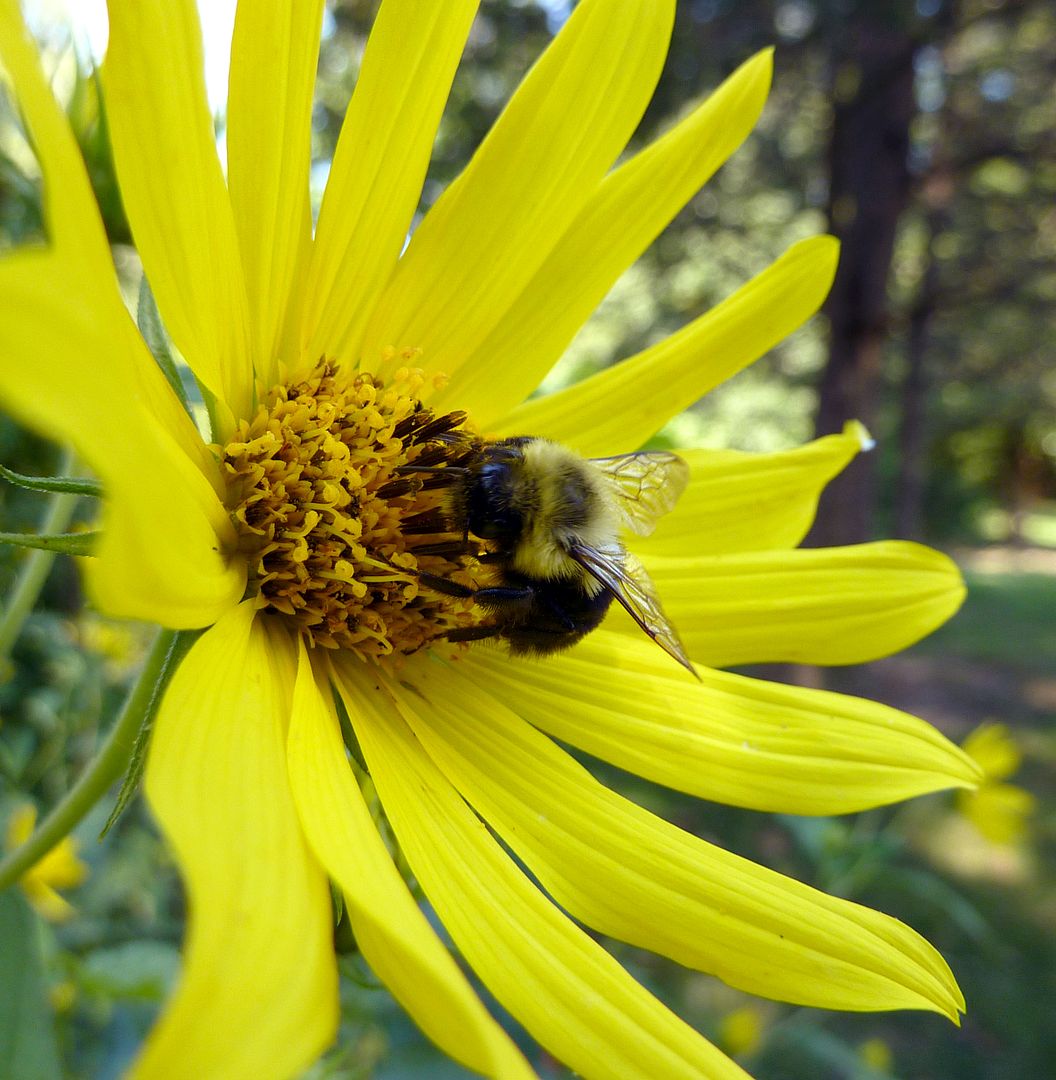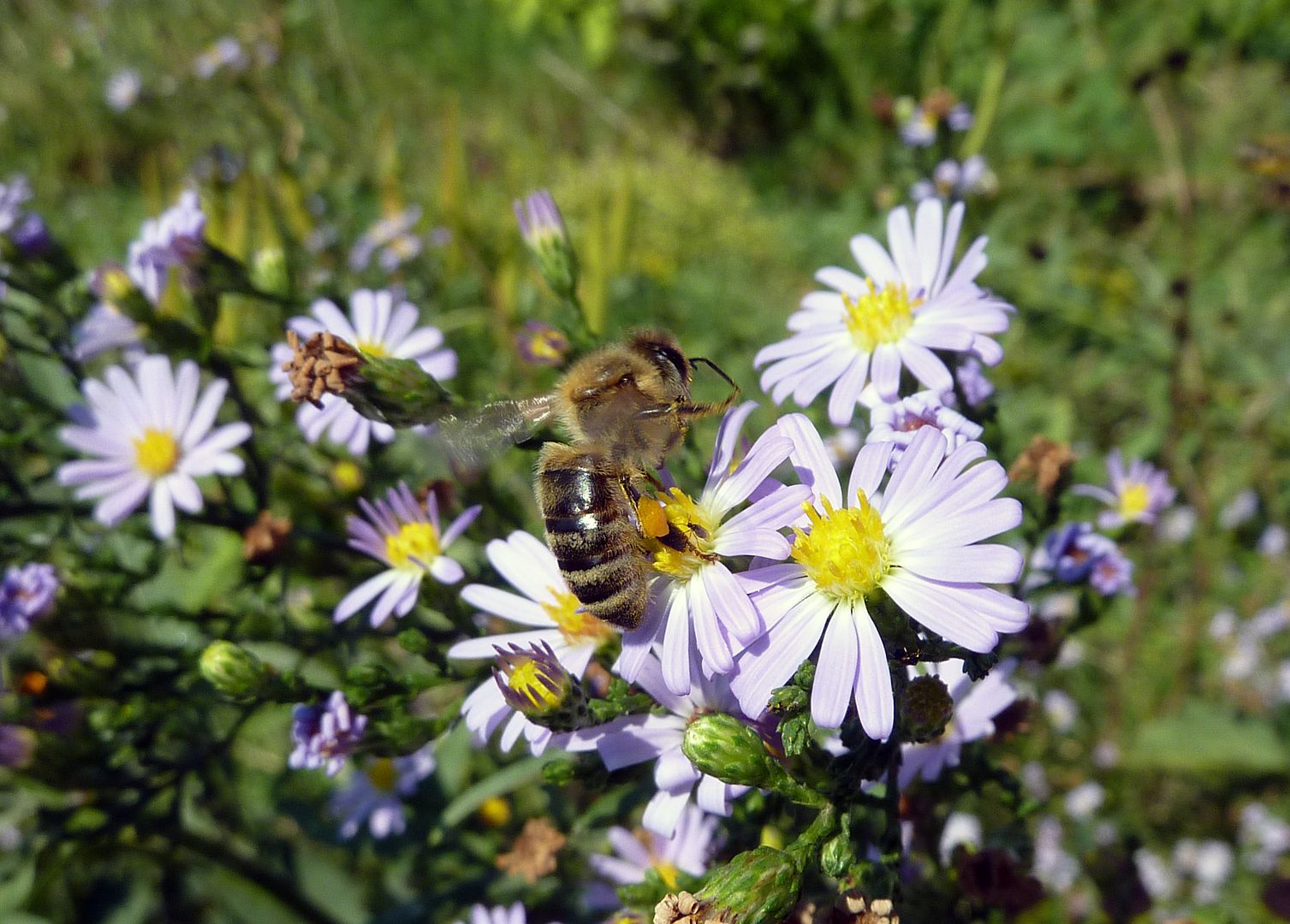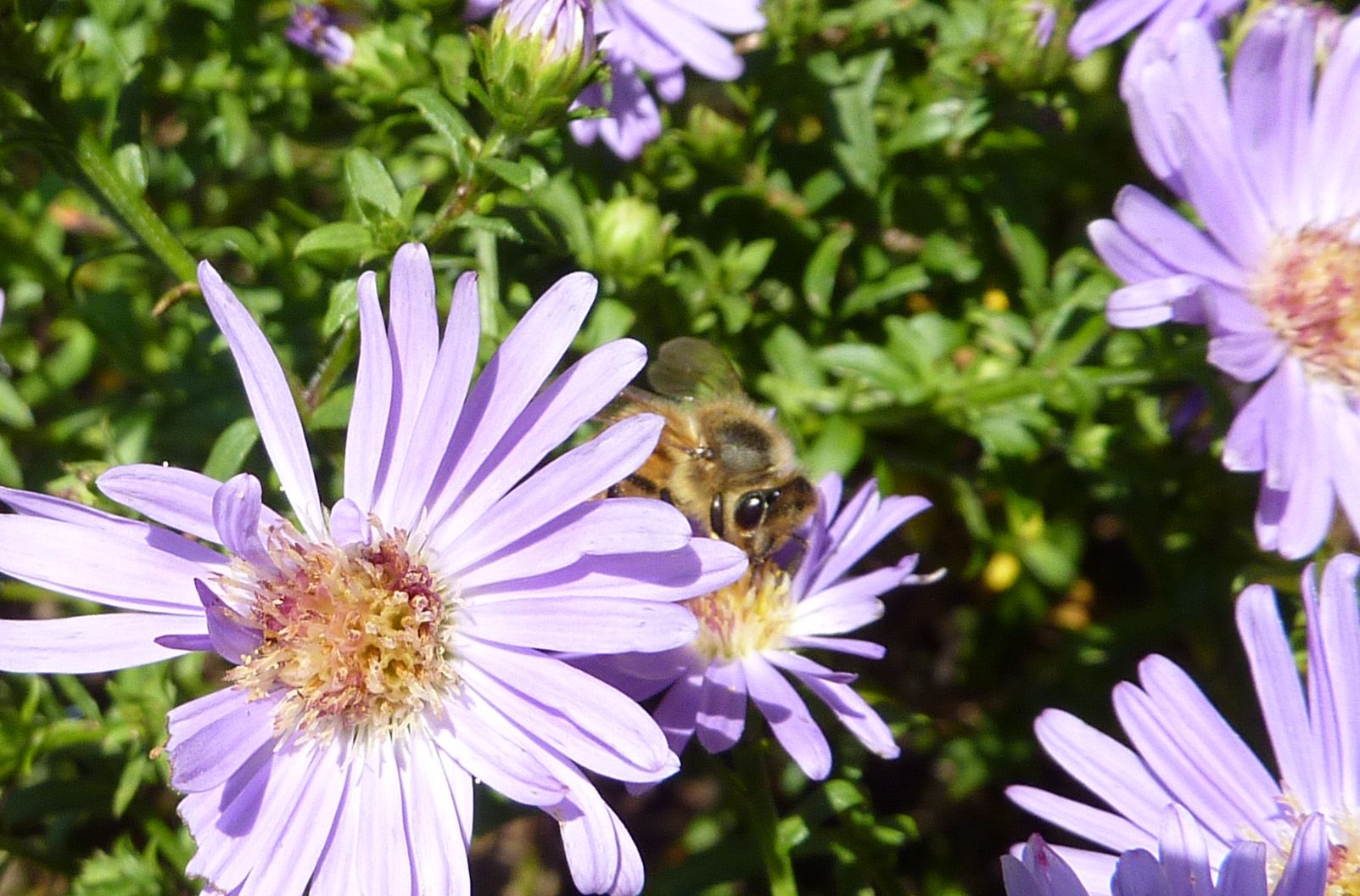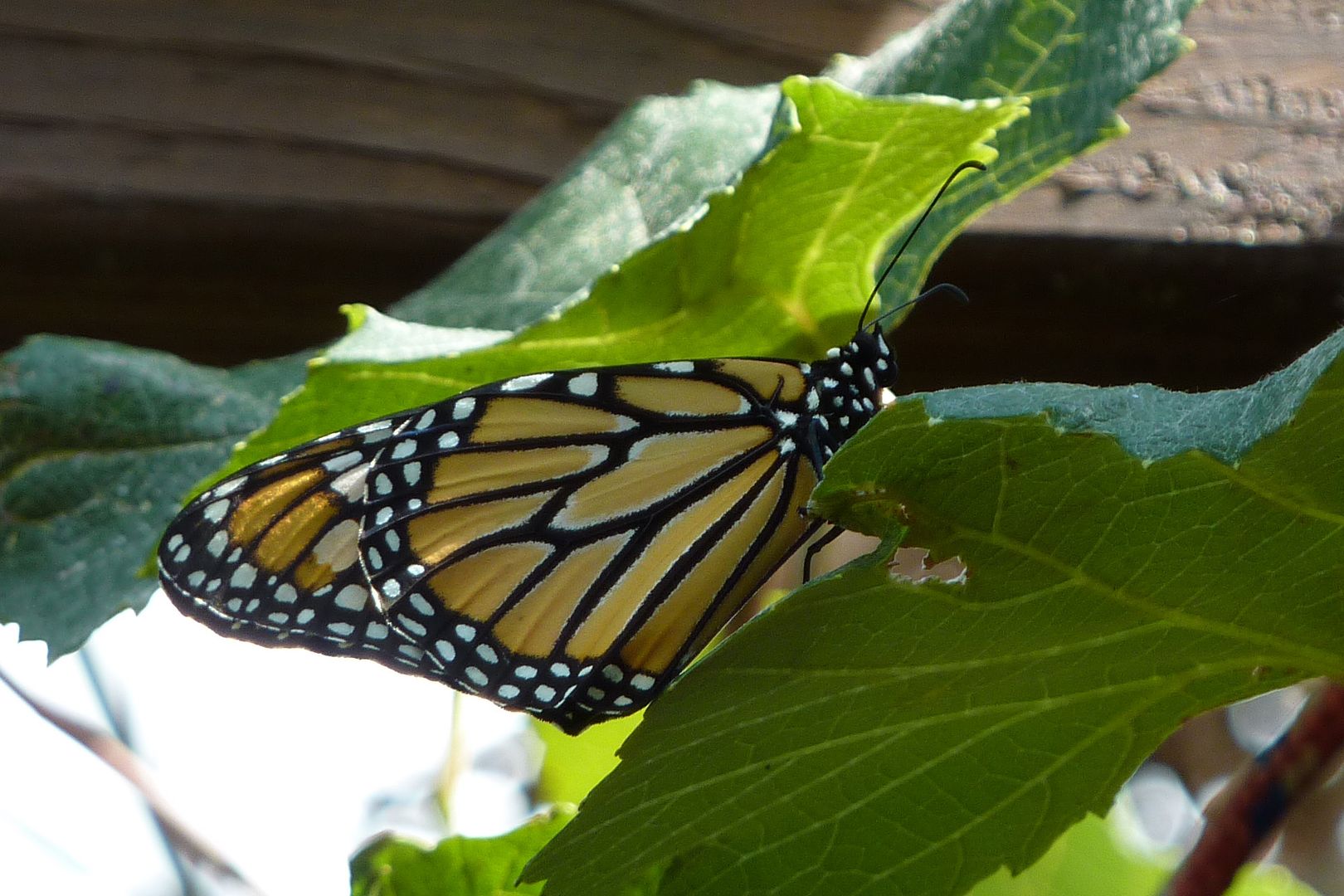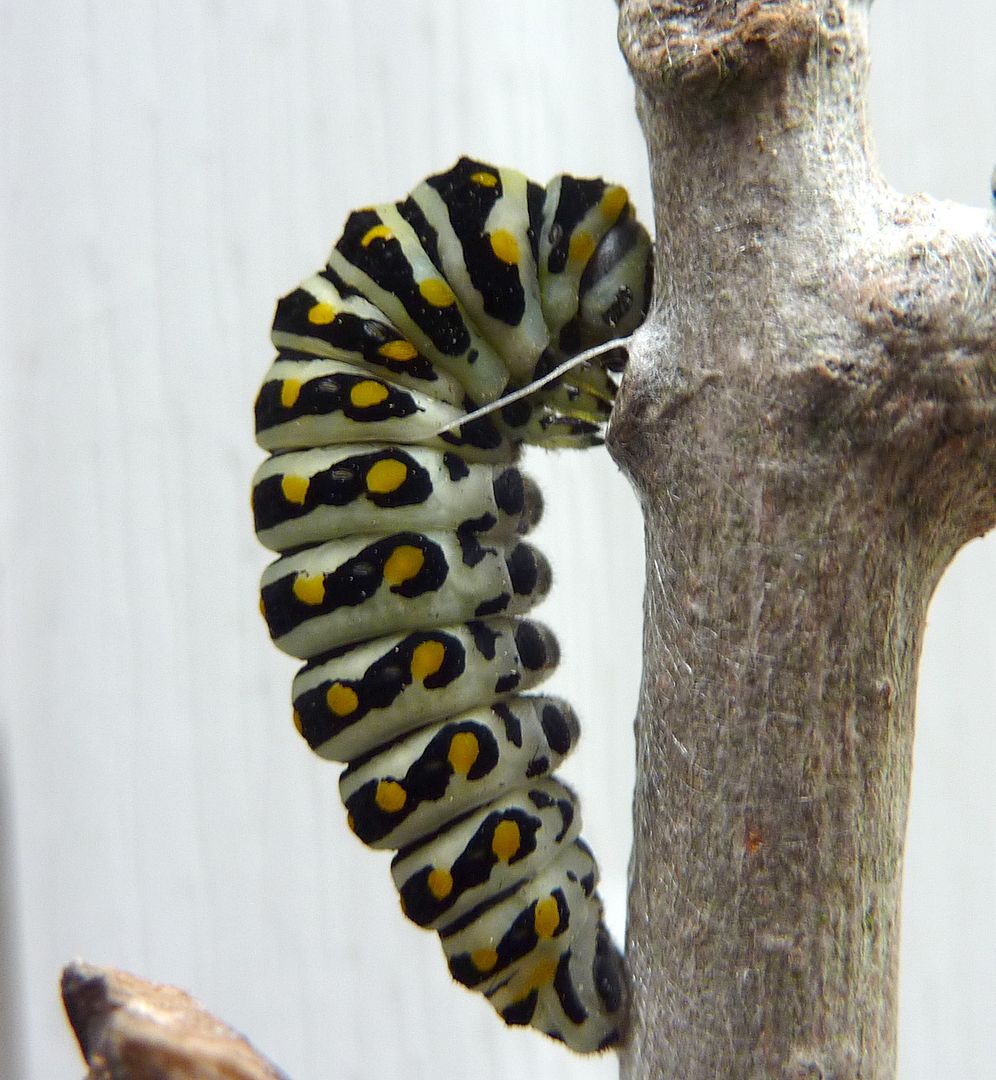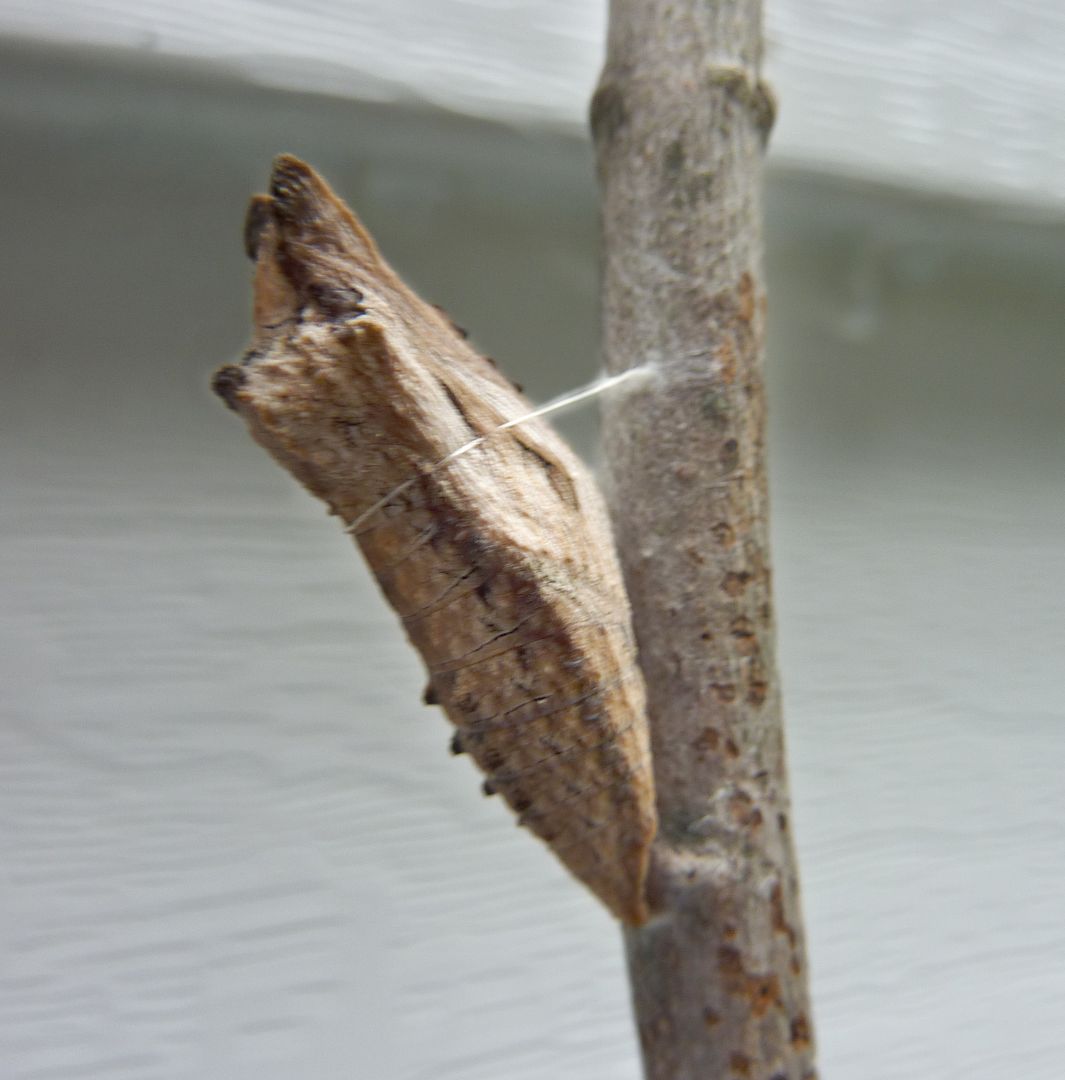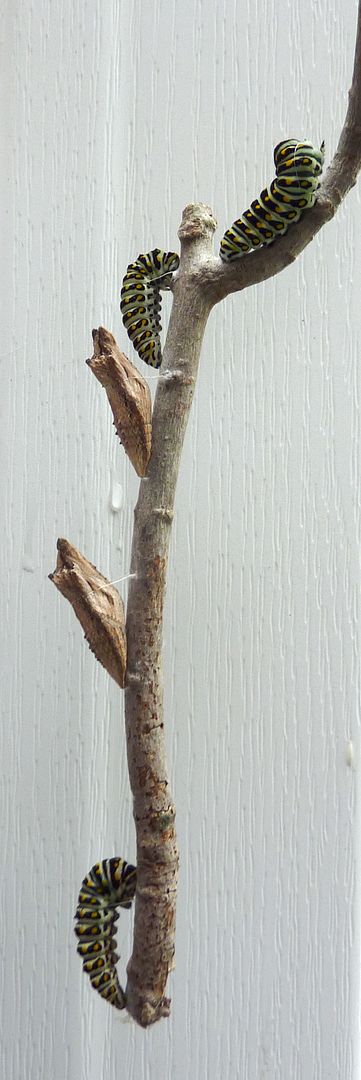Friday, September 28, 2012
Lasius neoniger Nuptial Flight
My friend out in Indiana found a Lasius neoniger nuptial flight happening. They're called the Labor Day Ant because their mating season normally takes place around the same time. This video was taken two days ago so they're still finishing up. This is a common grassland ant found all over North America.
Queens in this genus will sometimes band together during the founding stage to better ensure a successful colony. Workers however, will only tolerate one queen in the nest so after 4 weeks or so they'll slowly start killing off the submissive ones. The advantage to a single queened colony is order. Workers will be better able to fatten up the reproductives produced from one queen as opposed to a multi queen nest which won't be able to feed their reproductives anywhere as well.
Thursday, September 27, 2012
Fall Flying Ants (Video)
Brachymyrmex depilis is among the easiest ants for someone to step right over in the garden. The genus contains some of the smallest ants in the world, though I don't know how this species stacks up to it. Alates are flying from the nests now and I particularly find them right after its rained outside, though I've never located them exiting a colony. Their colonies are also pretty hard to spot. Something about their alates though is they are notorious for landing in pools of water and it's not an uncommon sight to find queens using expired males like a raft.
In contrast, Lasius claviger colonies are just as unseen over the year except for now. They're a social parasite of other Lasius species and produce 10 times as many alates as their hosts do to make sure successful colonies happen. In the afternoon hours colonies will erupt with tens of thousands of queens and males (usually favoring one gender heavily). Despite their numbers I've seen people walk right through thousands of them without even noticing. Sometimes I'll be in a field full of them, and people will walk up to me becuase I'm "doing something odd" and not even realize the ants even after they've started crawling up their legs, and landing on them.
Labels:
Ants,
Brachymyrmex,
Lasius,
native,
Video
Friday, September 21, 2012
Baby Box Turtle
This little bundle of joy emerged from our lawn two days ago. We'd found an Eastern Box Turtle wondering our yard earlier in the spring. As it turns out, females leave from the forest each spring to locate open fields to lay their egg(s). And as it again turns out, the eggs don't hatch until late summer, early autumn.
Isn't it cute? (still too early to tell if it's a boy or girl.)
Isn't it cute? (still too early to tell if it's a boy or girl.)
Tuesday, September 18, 2012
Perennial Sunflower Ants
So something else I was happy to see about the Narrow-Leaf Sunflower, Helianthus angustifolius, was that I found ants on it.
The leaf texture is rather rough feeling but they're also narrow which, for me, makes for an interesting contrast. The leaf hoppers (right) are a lot smaller than I'm used to seeing, and in relatively small groups. They're also hard to see under the slight fold of the leaf. Tending them was an ant I don't often get to see, Camponotus americanus.
Camponotus americanus is a soil nesting ant that most often comes out at night to forage. They're easily recognized in the eastern US, but as we go west, starting with Texas and a bell curve on up to Washington state, we find more species that make relying on color imposable to ID on alone. The head is always black, with the rest of the body ranging from yellow, to deep red.
Camponotus castaneus is a similar looking species but the head is never black, but rather a deep red/brown color.
The leaf texture is rather rough feeling but they're also narrow which, for me, makes for an interesting contrast. The leaf hoppers (right) are a lot smaller than I'm used to seeing, and in relatively small groups. They're also hard to see under the slight fold of the leaf. Tending them was an ant I don't often get to see, Camponotus americanus.
Camponotus americanus is a soil nesting ant that most often comes out at night to forage. They're easily recognized in the eastern US, but as we go west, starting with Texas and a bell curve on up to Washington state, we find more species that make relying on color imposable to ID on alone. The head is always black, with the rest of the body ranging from yellow, to deep red.
Camponotus castaneus is a similar looking species but the head is never black, but rather a deep red/brown color.
Monday, September 17, 2012
Praying Mantises in a Meadow
Two Chinese Mantises, Tenodera sinensis, mating on a New England Aster. I actually like both of these pictures. The one on the right for the inclusion of the blue flowers, and the one on the left for the golden meadow background and better stance of the male. Yes the brown one is the male in this case.
At least I'm assuming that's the case here.
I took these while at the Mt. Cuba Center on Saturday. Around this time of year mating and laying eggs is just about all mantises are doing. Eggs are laid on tall grasses or plant stems in sunny spots, often along a forest edge. And maybe a higher concentration next to late flowering perennials who's pollinator activity sustained the female during her last few days.
Sunday, September 16, 2012
Sunflowers and Susans at the Mt. Cuba Center
Last year the at the Mt. Cuba Center they had this wonderful perennials sunflower that I just loved the moment I saw it. First off note that everything is pretty much dead in the photo except for it. That's because it was probably late September or October when it was taken.
This is Narrow-Leaf Sunflower, Helianthus angustifolius 'Mellow Yellow' which is also called Swamp Sunflower because it likes to grow in slightly wet conditions. The Narrow-Leaf name is fitting because pretty much all of the leaves are thin. 1cm is probably the thickest you'll find them on the plant. The 'Mellow Yellow' cultivar is nice because you get that yellow color without it being too flashy against the autumn sun. It's more of a fall color anyhow. The true species is much brighter and on par with what you see in pretty much every other Helianthus species around.
Also take one last quick glance at the background in both photos.
Here we are this year on the 15th of September. This was for their class on the Asteraceae plant Family, and that's the instructor, David Korbonits standing next to the same plant before it's flowered. I loved this plant when I saw it last year. This year so far it hasn't fallen over or done anything crazy. And as it so happens This Was The Plant They Gave Out For Taking The Course!!! And they asked me to take two of them home! I was Thrilled! (Also note the background and how much more abundant the Black-Eyed Susans are!)
First off Helianthus is a fair sized genus with lots of perennial sunflowers in it, but almost no one is selling them. The ones I do see getting sold are almost always followed by the warning "This plant likes to spread by rhizomes and is not suitable for small gardens." I hate this warning so much because I really don't get the idea of what they mean by a small garden. Compare for a moment how much fuller this plant is from the first photo at the top to the one just above. That's one year's difference and I fell like I can honestly live with that. But its kind of obvious that it's sending up a few dozen more stems.
Presumably the narrow leaves of the plant don't shade out what's growing under or through it. Whether it's growing up through something or falling over on them I don't see this plant shading anything out. I report in later years on if that's the case or not.
Another perennial sunflower that caught my eye was Small Wood Sunflower, Helianthus microcephalus, who's flowers are tiny but very numerous on the plant. Black-Eyed Susans are growing all around them to give you an idea of how small the flowers are. But this one sunflower plant was clearly the pollinator favorite. There were lots of bumblebees all around it. It's another one I'll have to look into. Currently I'm interested in Ox-Eyed Sunflower, Heliopsis helianthoides, which spreads more by seeds and not by rhizomes which presumably makes it easier to control.
Purple-Disk Sunflower, Helianthus atrorubens, was a shorter sunflower at around 4' tall. The stem was somewhat red or burgundy farther down the plant, but I'm told that's not true for all plants of this species. Even so at that height this might be a more garden appropriate species. The Purple comes from a slight illusion when looking at the flowers at the right angle with the right lighting, I otherwise didn't see it. (Also note the background.)
So last year there wasn't anywhere near this many Black-Eyed Susans growing and they've just completely filled in every nook free in the garden. Also I'm giving myself an A+ for this photo.
I forget if Rudbeckia fulgida or Rudbeckia hirta was the dominant species, but R. hirta is an annual/biannual while R. fulgida tends to be a perennial. I get so annoyed by seeing this many wonderful flowers and not seeing a single bee on them! I know I've seen tiny Sweat Bees and the occasional Honeybee work them but even in bulk like this, and in a massive native plant garden too almost nothing is pollinating them for long. Clearly it doesn't take much to initiate pollination because they're spreading so well, so maybe the temperature has to be right or something.
In parts of their meadow garden they grow like crazy even with the towering grasses hanging over them. All of the yellow in these two shots are Rudbeckia flowers!
Getting away from the main clumps there were a few coming up sporadically. Dave who manages the meadow garden mentioned they might be thinning them out next year. Assuming they're perennial they might as well pot them up and hand them out at the next years Wildflower Festival, though that might be a little boring.
American Beauty Berry, Callicarpa americana, were starting to ripen. Of all the berry plants that ripen now I'm told this is among the first the birds go after.
Southern Blue Monkshood, Aconitum uncinatum, was in bloom and it's always one I love to highlight. Don't get me wrong, it's a deadly poison that will kill you if you eat any part of it. But it's also the only plant that gives you this color in the shade at this time of the year. I've seen Monarchs on it too! Bees love it.
I forgot what this one was but it just looked neat.
I forgot this one too but apparently it's good at attracting Blister Beetles, which drip a powerful skin irritant that causes some god awful welts, soars, and discoloration. Not something you want to have in the garden ... at least not right up front. The bees were enjoying it though.
This is Narrow-Leaf Sunflower, Helianthus angustifolius 'Mellow Yellow' which is also called Swamp Sunflower because it likes to grow in slightly wet conditions. The Narrow-Leaf name is fitting because pretty much all of the leaves are thin. 1cm is probably the thickest you'll find them on the plant. The 'Mellow Yellow' cultivar is nice because you get that yellow color without it being too flashy against the autumn sun. It's more of a fall color anyhow. The true species is much brighter and on par with what you see in pretty much every other Helianthus species around.
Also take one last quick glance at the background in both photos.
Here we are this year on the 15th of September. This was for their class on the Asteraceae plant Family, and that's the instructor, David Korbonits standing next to the same plant before it's flowered. I loved this plant when I saw it last year. This year so far it hasn't fallen over or done anything crazy. And as it so happens This Was The Plant They Gave Out For Taking The Course!!! And they asked me to take two of them home! I was Thrilled! (Also note the background and how much more abundant the Black-Eyed Susans are!)
First off Helianthus is a fair sized genus with lots of perennial sunflowers in it, but almost no one is selling them. The ones I do see getting sold are almost always followed by the warning "This plant likes to spread by rhizomes and is not suitable for small gardens." I hate this warning so much because I really don't get the idea of what they mean by a small garden. Compare for a moment how much fuller this plant is from the first photo at the top to the one just above. That's one year's difference and I fell like I can honestly live with that. But its kind of obvious that it's sending up a few dozen more stems.
Presumably the narrow leaves of the plant don't shade out what's growing under or through it. Whether it's growing up through something or falling over on them I don't see this plant shading anything out. I report in later years on if that's the case or not.
Another perennial sunflower that caught my eye was Small Wood Sunflower, Helianthus microcephalus, who's flowers are tiny but very numerous on the plant. Black-Eyed Susans are growing all around them to give you an idea of how small the flowers are. But this one sunflower plant was clearly the pollinator favorite. There were lots of bumblebees all around it. It's another one I'll have to look into. Currently I'm interested in Ox-Eyed Sunflower, Heliopsis helianthoides, which spreads more by seeds and not by rhizomes which presumably makes it easier to control.
Purple-Disk Sunflower, Helianthus atrorubens, was a shorter sunflower at around 4' tall. The stem was somewhat red or burgundy farther down the plant, but I'm told that's not true for all plants of this species. Even so at that height this might be a more garden appropriate species. The Purple comes from a slight illusion when looking at the flowers at the right angle with the right lighting, I otherwise didn't see it. (Also note the background.)
So last year there wasn't anywhere near this many Black-Eyed Susans growing and they've just completely filled in every nook free in the garden. Also I'm giving myself an A+ for this photo.
I forget if Rudbeckia fulgida or Rudbeckia hirta was the dominant species, but R. hirta is an annual/biannual while R. fulgida tends to be a perennial. I get so annoyed by seeing this many wonderful flowers and not seeing a single bee on them! I know I've seen tiny Sweat Bees and the occasional Honeybee work them but even in bulk like this, and in a massive native plant garden too almost nothing is pollinating them for long. Clearly it doesn't take much to initiate pollination because they're spreading so well, so maybe the temperature has to be right or something.
In parts of their meadow garden they grow like crazy even with the towering grasses hanging over them. All of the yellow in these two shots are Rudbeckia flowers!
Getting away from the main clumps there were a few coming up sporadically. Dave who manages the meadow garden mentioned they might be thinning them out next year. Assuming they're perennial they might as well pot them up and hand them out at the next years Wildflower Festival, though that might be a little boring.
American Beauty Berry, Callicarpa americana, were starting to ripen. Of all the berry plants that ripen now I'm told this is among the first the birds go after.
Southern Blue Monkshood, Aconitum uncinatum, was in bloom and it's always one I love to highlight. Don't get me wrong, it's a deadly poison that will kill you if you eat any part of it. But it's also the only plant that gives you this color in the shade at this time of the year. I've seen Monarchs on it too! Bees love it.
I forgot what this one was but it just looked neat.
I forgot this one too but apparently it's good at attracting Blister Beetles, which drip a powerful skin irritant that causes some god awful welts, soars, and discoloration. Not something you want to have in the garden ... at least not right up front. The bees were enjoying it though.
Coreopsis Testing
Tall Tickseed, is but one of the plants I saw at the Mt. Cuba Center's trial garden. Their trial garden had been under construction until earlier in the year, but I hadn't been to it since their wild flower celebration earlier in this April. This plant caught my eye because I grow the non-cultivar of it, which is about 2 images shorter, around 4' instead of 7'.
There were a number of Coreopsis growing there. Here are some of what I thought were the highlights.
Coreopsis 'Summer Punch' caught my eye because it reminded me of the true species of Blanket Flower, Gaillardia aristata. One could almost grow the two together.
Coreopsis 'Sienna Sunset' it surprises me how much I like the color on this. The flower is a bronzed salmon tone that I want to say makes it a very unique color.
Coreopsis rosea 'Dreamcatcher' was the brightest and most lush looking of the purples. I think they said species growing in double rows there were annuals. The idea though was to grow them in a garden setting, but I'm not sure if that includes regular watering.
Coreopsis integrifolia had a very striking flower to it. I think they were growing it more to test its cold hardiness as it's native to Florida, Georgia, and South Carolina. My fingers are crossed that it survives.
They were also testing out Heucheras. Now, the majority of these are shade plants, so what's photographed here is their full sun testing. That tarp that's going around in the back is covering the full shade area of the trial garden where they had hundreds of Heucheras growing. This isn't a group of plants that I've ever wanted to grow because they're more about the foliage than the flowers. They come in a wide variety of colors though and easily add class to the garden. The shade garden in the summertime in particular tends to need some coloring up. So these are a great plant but not for me.
So the real reason for me going to the Mt. Cuba Center was to learn about the Asteraceae plant family, which I'll get into more detail a little later.
There were a number of Coreopsis growing there. Here are some of what I thought were the highlights.
Coreopsis 'Summer Punch' caught my eye because it reminded me of the true species of Blanket Flower, Gaillardia aristata. One could almost grow the two together.
Coreopsis 'Sienna Sunset' it surprises me how much I like the color on this. The flower is a bronzed salmon tone that I want to say makes it a very unique color.
Coreopsis rosea 'Dreamcatcher' was the brightest and most lush looking of the purples. I think they said species growing in double rows there were annuals. The idea though was to grow them in a garden setting, but I'm not sure if that includes regular watering.
Coreopsis integrifolia had a very striking flower to it. I think they were growing it more to test its cold hardiness as it's native to Florida, Georgia, and South Carolina. My fingers are crossed that it survives.
They were also testing out Heucheras. Now, the majority of these are shade plants, so what's photographed here is their full sun testing. That tarp that's going around in the back is covering the full shade area of the trial garden where they had hundreds of Heucheras growing. This isn't a group of plants that I've ever wanted to grow because they're more about the foliage than the flowers. They come in a wide variety of colors though and easily add class to the garden. The shade garden in the summertime in particular tends to need some coloring up. So these are a great plant but not for me.
So the real reason for me going to the Mt. Cuba Center was to learn about the Asteraceae plant family, which I'll get into more detail a little later.
Thursday, September 13, 2012
The Autumn Garden
Goldenrod, Asters, and Perennial Sunflowers form the bulk of the autumn nectar flow and native plant garden. Here we see Solidago rugosa 'Fireworks' combine with the pink version of the New England Aster, Symphyotrichum novae-angliae.
They're the perfect little combination for an eye catching perennial boarder. They grow in the same conditions, flower at the same time, and are roughly the same height, and the colors really pop in the summer sun (though I recommend photographing them more toward the afternoon).
Helianthus maximilianii is probably among the more common perennial sunflowers sold today. Rarely have I had a year where it hasn't fallen over however.
Skyblue Aster, Symphyotrichum oolentangiense, is doing great as a knee high, pale blue flowering nectar source. As years go on it seems to fill in thicker with more flowers. I remember last year they were quite barren looking but still angelic in how the blooms were spread out. Because of its low height I don't think falling over is an issue.
Butterflies have been landing on all of these but the Skyblue Asters seem to be a favorite.
Aromatic Aster, Symphyotrichum oblongifolium, is one aster that doesn't even try to stand up. They pretty much slink along the ground all year then puff up with flower buds come fall. They're an excellent boarder plant.
They're the perfect little combination for an eye catching perennial boarder. They grow in the same conditions, flower at the same time, and are roughly the same height, and the colors really pop in the summer sun (though I recommend photographing them more toward the afternoon).
Helianthus maximilianii is probably among the more common perennial sunflowers sold today. Rarely have I had a year where it hasn't fallen over however.
Skyblue Aster, Symphyotrichum oolentangiense, is doing great as a knee high, pale blue flowering nectar source. As years go on it seems to fill in thicker with more flowers. I remember last year they were quite barren looking but still angelic in how the blooms were spread out. Because of its low height I don't think falling over is an issue.
Butterflies have been landing on all of these but the Skyblue Asters seem to be a favorite.
Aromatic Aster, Symphyotrichum oblongifolium, is one aster that doesn't even try to stand up. They pretty much slink along the ground all year then puff up with flower buds come fall. They're an excellent boarder plant.
Sunday, September 9, 2012
The Plant List So Far
| Unfortunately Prairie Moon Nursery seem to be sold out for the year. I'm assuming their greenhouse plugs must have been effected by the drought. They're still selling seeds but that's what I'm wanting to try this year. As they were one of my main sources for native plants I've been forced to look elsewhere, and I'm happy with the nursery that I found. Shooting Star Nursery seems to have a wide selection of woody shrubs I've been looking everywhere for. Wild Black Cherry, Prunus serotina, is a small tree with fragrant white flowers in the spring time. The berries are devoured by birds over the summer or they can be used to make jam. Doug Tallamy praises this plant more than any other for the abundance of Lepidoptera that use it which include the eastern Tiger Swallowtail. I've always seen these shrubs growing around the neighborhood but could never find anywhere that sells them. | |
Indigo Bush, Amorpha fruticosa, is a very uncommonly sold plant. It's a nitrogen fixer which is good for the soil and has very interesting looking flowers. It's a host plant to the Silver Spotted Skipper, the Southern Dogface Sulphur, the California Sulphur, the Gray Hairstreak, and Hoary Edge butterfly. | |
Paw Paw, Asimina triloba, is a native food plant that I've been trying to establish for a few years now. I have one sapling established and growing but I've read they don't really flower or produce fruit until they're around 10 years old. Worse yet I've read they either have to cross pollinate with anther tree or are self pollinating but benefit from a second tree around. Zebra Swallowtails use it as a host plant. I'm actually out of their range but so is a college up in northern New Jersey where I'm told a population of Zebra Swallowtails flies around the paw paw trees growing on campus there. | |
| Spicebush, Lindera benzoin, is another native shrub I should plant more of. I've had one for a few years but it was planted in too dry of a location and wasn't expanding at all. Last year I moved it to a wetter location where it's established now and should start putting out more growth. It's the host plant of the Spicebush Swallowtail which I've found in my yard! However I don't think one shrub is enough for them to establish so I'm opting to plant more of them. | |
Wafer-ash, Ptelea trifoliata, is the host plant to the Giant Swallowtail. I've been so mistaken on the range of this butterfly because most of their host plants are in the citrus family, I would have never expected them to be found in Canada. Wafer Ash is also called Hoptree because it used to be used instead of Hops. The flowers in the spring time are fragrant and it's also a host plant to the eastern Tiger Swallowtail. | |
Prairie Willow, Salix humilis microphyllus. I'm not sure on the microphyllus subspecies but Salix humilis is one I've been looking everywhere for! This is one of the shortest growing shrugs of the willow family. They flower early in the year, bees love them, and they're a host plant to the Viceroy Butterfly. |
Saturday, September 8, 2012
Monarch Release and Meadow Tour Video
I released a Monarch Butterfly this morning before a storm rolled through. She took off kind of quick though so I decided to walk around the garden first. Lots of things in bloom. The seed heads to butterfly weed look really showy next to the asters in bloom, though I never really stop to focus on that in the video.
After walking around I found her on our grape vine sun bathing. Hopefully she makes it to Mexico as I didn't get any females laying any eggs in the garden. I've seen Monarchs flying about but they really haven't taken advantage of my yard.
Thursday, September 6, 2012
Black Swallowtails Overwintering
A Black Swallowtail Caterpillar, Papilio polyxenes, spinning a safety line to hold itself up before forming a chrysalis.
The chrysalis looks like a plant stem though it's larger than any bud that I've ever seen.
This one has been in there for more than 10 to 14 days that it normally takes to hatch. Black Swallowtails go through the winter this way and don't hatch until 6 to 8 months later!
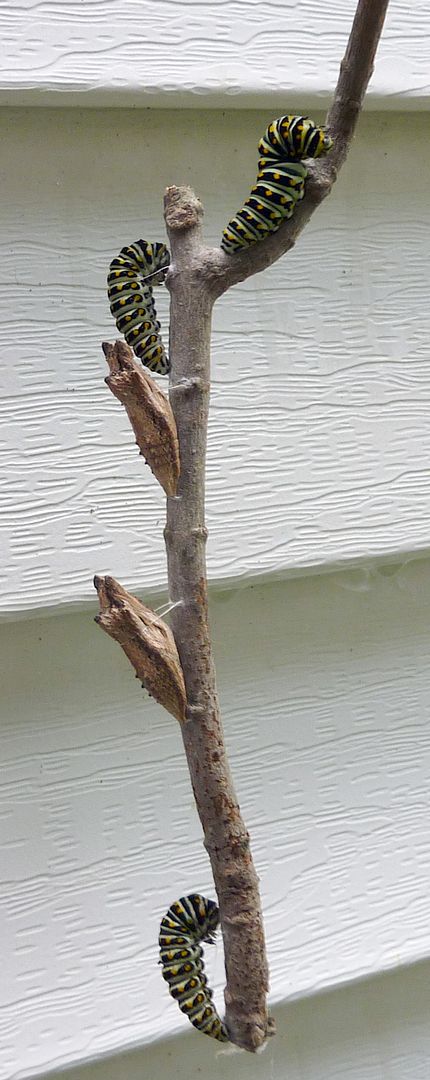 I couldn't decide which of these two was the better photo. I don't know if they seek each other out to add to the plant stem illusion or if that was just the best stick in the terrarium I grew them in. Most likely none of them are going to hatch until next year.
I couldn't decide which of these two was the better photo. I don't know if they seek each other out to add to the plant stem illusion or if that was just the best stick in the terrarium I grew them in. Most likely none of them are going to hatch until next year.
Subscribe to:
Posts (Atom)
